














In just under a year, India will go to the polls with its next general elections.
Last time round in 2014, there was much excitement in the lead up to the elections due to the expected dominance of the Bharatiya Janata Party over the Congress. For the first time then, the major political parties used social media as a tool to attract voters, spending between 2-5% of their electioneering budgets in this sphere. Market research companies have set the amounts at INR 500 crores (AUD $100 million) and INR 400 crores (AUD $80 million), respectively.
Indian Link, may be reproduced in part or in whole without the written consent of the editor. Opinions carried in Indian Link are those of the writers and not necessarily endorsed by Indian Link. All correspondence should be addressed to: INDIAN LINK MEDIA GROUP
Level 24/44 Market St, Sydney 2000 GPO Box 108, Sydney 2001
Ph: 02 9279-2004 Fax: 02 9279-2005
Email: info@indianlink.com.au
This spend will be vastly increased as younger voters join the electoral rolls. Observers have noted that Prime Minister Narendra Modi, a clever user of social media, has already reached out to this new electoral bank. In 2017, when he delivered his shortest Independence Day speech from the ramparts of the Red Fort, it might well have been directed to a generation whose attention span
is shorter and lifespan longer than its predecessor. His eye might have been set on those born between 1997 and 2001. In the 2019 Look Sabha polls, these very individuals will be exercising their voting rights for the first time in a parliamentary election.
Modi had said then, “January 1, 2018 will not be an ordinary day – those born in this century will start turning 18. For these people, this is a decisive year of their lives.”
While the traditional rallies and loudspeakers, posters and banners will still be at play, it is expected that social media will play a large part to woo voters and also turn them away from the opposing party.
Though more than half of India’s population still does not have access to the internet, India is considered to be among the top five countries in terms of growth of the internet users. It is estimated that India has 462 million active internet users, of which 153 million are active social media users. The active social media users are growing at about 23% per year, with WhatsApp being the platform experiencing the strongest growth, followed by YouTube and Facebook.
With over 200 million users, it is


believed that 13.7 billion WhatsApp messages are sent every day. In fact, Indians alone accounted for other more than 20 billion New Year’s Eve greetings set via WhatsApp this year.
In the recently concluded state elections in Karnataka, it is claimed that the two major parties reached 1.5 million followers via 20,000 WhatsApp groups. These elections are being called the ‘WhatsApp First elections’ and the take up of this platform while surprising to many, was not fully unexpected. Using this platform as a way to spread information - which cannot be verified, which can go viral easily, and which is spread between small groups multiplied by millions - is every political party’s dream of planting incorrect information if they so wish to do. Fact checking is difficult to do and because WhatsApp is such a closed channel, with all messages encrypted between senders, determining the source of false and misleading messages is nearly impossible.
While the social media platforms are developing well, the traditional print media is also strong in India with increasing circulations. In the next election cycle, they will have an important role to play as they report upon and analyse the politics of the nation.
C SAustralian Registered Migration Agents and Mortgage Brokers. We help with all your



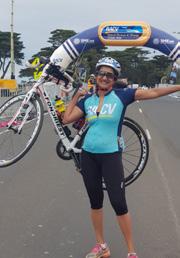
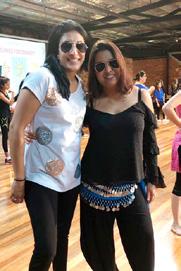
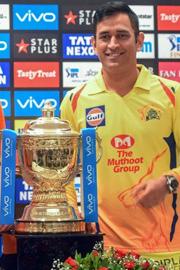














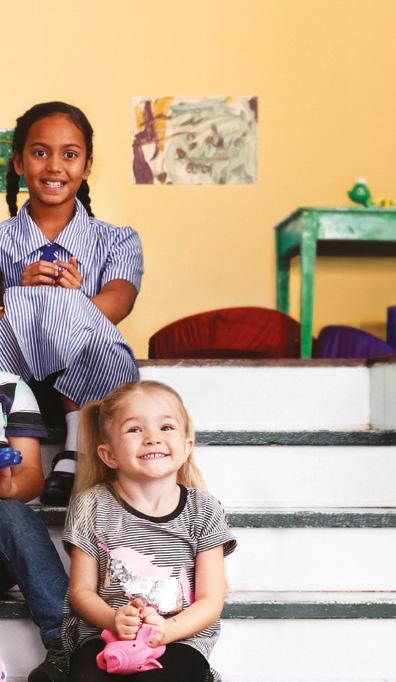
COMPLETE YOUR ONLINE FORM NOW THROUGH MYGOV
Starts 2 July 2018












The New Child Care Package will help parents with children aged 0-13 to work, train, study or volunteer.
One new Child Care Subsidy replaces the two current child care payments.
There’s also a Child Care Safety Net to help disadvantaged families and children with additional needs.


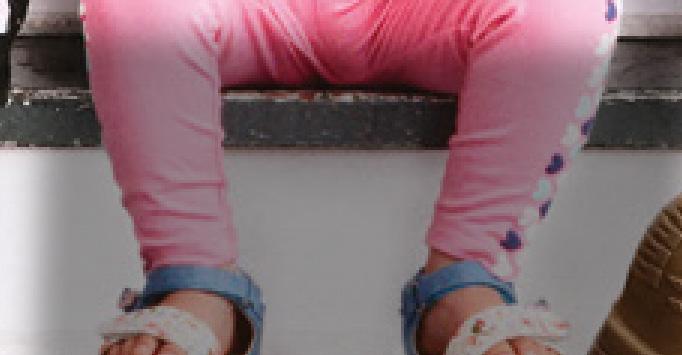






Changes to the annual cap will make child care more affordable for most families.
You need to provide some new information and confirm your current details NOW through myGov. Find
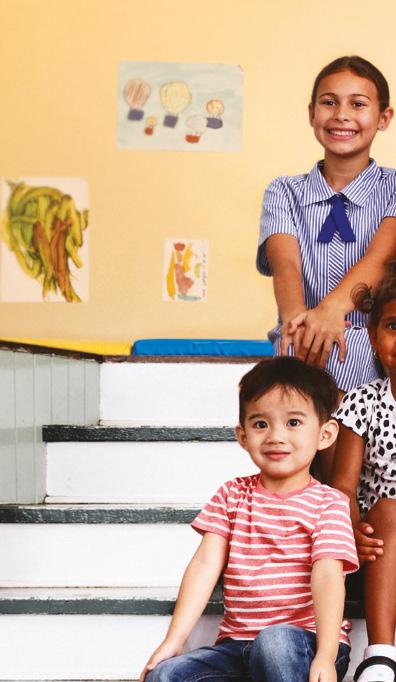
KALYANI WAKHARE wrote about having been ‘forced’ to take up dance classes by her young daughters.

RAJNI ANAND LUTHRA wrote about Indian veterans seeking acknowledgement for their service, on the occasion of ANZAC Day 2018 Bawa Singh Jagdev OAM wrote: The Anzac Day march (originally the Battle of Gallipoli or the Dardanelles Campaign) story was a good piece of journalism. But more should have been said about the battle of Gallipoli and the forces who fought in it, as the March was mainly to honour those men and women who made the supreme sacri ces when the ill-conceived strategy of Winston Churchill to control the sea route from Europe to Russia during World War I began with a failed naval attack by British and French ships on the Dardanelles Straits in February-March 1915. Although the Sikhs and Gorkhas fought together side by side with the ANZAC and nine Sikhs were enlisted in the Australian army in WW1, the request by the National Sikh Council to march in the ANZAC Day parade to honour those Sikhs was arrogantly refused until Council showed the NSW RSL the pictures of Sikhs in Gallipoli and the statements of their gallantry by Commander Ian Hamilton. Only then the RSL in 2007 allowed the descendants of the Sikhs who fought in Gallipoli to march. Coming back to your article, not much was written about the Sikhs in the battle of Gallipoli. A major part of the article was devoted to those Indians servicemen who fought in the local battles with Pakistan after 1947, which has nothing to do with any World War. Even casually reading through the statements of Hamilton, his experience and assessment of the Gallipoli battle and his recommendations will give a journalist a better and unbiased view of the subject.

I am not criticising your views, which are quite educational, but in my opinion, the contents don’t do justice to the purpose of the article. It would perhaps be a good article on the Indian Republic Day as it talks about the services of the Indian Army that fought in various battles after 1947 and not in Gallipoli, WW1 or WW2.
There are several Gallipoli monuments in various cities in India but they were established by the then British government that valued the sacri ces of the soldiers who fought the battle. Yes, India should organise its own march to celebrate its soldiers’ sacri ces but that is politics and it will never happen. On the centenary of the battle of Gallipoli, the Council requested the Indian foreign of ce in writing to send an Indian military band to celebrate the occasion so that they could march behind the band, but the request fell on deaf ears and was never even acknowledged. Editor replies: Thank you very much for your comments. The purpose of the article this year was not to reprise the Sikh (and other) involvement at ANZAC Cove. We have done this many times before, and the service and sacri ce of Indian soldiers in 1914-15 is well known and fully acknowledged now. Our article this year was about the sense of appreciation that ANZAC Parade marchers feel, and whether they would like to see such acknowledgement given to armed services personnel in India. Everyone we spoke to agreed that such acknowledgement will be welcome.
We felt that our ANZAC Day coverage this year should go over and beyond the march itself, since it is more than 10 years now that a separate Indian contingent has been marching. We made it a national report by including input from all major centres across the country.

Arun Mendhi wrote: Very nice article and lovely performance by all. Keep it up and enjoy life.

Sachin Wakhare wrote: #prouddad #proudpartner. Beautiful performance by all students of Harshala.
Sreedevi Rapulo wrote: It was an amazing performance from all of you. Your efforts in learning ended up as a successful program on stage; it was a feast for the eyes to see such young children performing.
Rajni Luthra wrote: Lovely story - and one that the little ones will thank their mum for, in years to come! Well done to all three Wakhare ladies.
On Mother’s Day, NEHA MALUDE wrote about her rst pregnancy and the search for her ‘missing’ maternal instinct.

SL Pathi wrote: I re ected for quite a while on the last line “I am a bad mum.” There is no such person as a bad mum. Every woman from the moment of conceiving wants to do her best for her offspring(s). In that process mums set the bar so high that even when they fall by a notch or two they unjusti ably assume the ‘bad mother’ tag. There may be times they fall short of the high standards they set for themselves due to factors beyond their control. And there may be times it is only their perception they haven’t done their best. It is for good reasons that God - or naturehas assigned the female species to bear and nurture their progeny. Thank heavens, the male species is relegated to the back in this regard, gender equality pleas notwithstanding.
An Indian student studying at @ MonashUni has won the Audience Choice Award at the largest science competition in the world -#Famelab, for his research on new treatments for heart disease.
Australian HC to India Harinder Sidhu quotes Indian Link on Muthu Vignesh


“Overwhelmed” so I will keep it short for now and try not to jump :).


@masterchefau @Nigella_Lawson and Alanna @alannasapwell Loki Madireddi, Masterchef AU contestant on winning the season’s rst immunity pin

CHITRA SUDARSHAN wrote a review of Poonam Saxena’s translation of Scene 75, a Hindi-Urdu book by Rahi Masoom Raza.

Madhubala wrote: Good job. These kind of translated novels help make Indian languages better known.
Harper Collins tweeted: Indian Link talks about Rahi Mosoom Raza’s #Scene75 and its translation by Poonam Saxena.
WHERE IN INDIA?

INDIAN LINK POLL







Do you think India should play a day-night Test in Adelaide against Australia?

Yes, why not?: 89%
No, they shouldn’t: 11%
With the wealth of beauty Australia has, it’s one of the most perfect locations for producers to explore.
Bollywood actor Parineeti Chopra on lmmaking in Australia

INDIAN LINK ON INSTAGRAM
Adelaide artist Shruti Ranade Yelleshwaram shared this picture of Indian Link’s feature on her work on her Insta account instaartist_shruti. She wrote: And it is out.. all over Australia #dreamcometrue #artislife #artistso nstagram #indianlink #indianlinkmagazine



It’s a little bit sel sh from India’s point of view because we need to revitalise Test cricket. Mark Waugh on India’s decision not to play day night test match in Australia

All of us wore saris and it made us proud. We felt we represented India at the event and that’s a great feeling.
Suhani Jalota, Founder of Myna Mahila Foundation after attending the royal wedding

What comes to mind when you think of the word ‘money’? Issues like ‘salary’, ‘bills’ and ‘expenses’ are possibly the most common, right? Perhaps ‘security’ too, since so many of us associate it with a constant income. Ideas that probably don’t come to mind as often (as they should) are ‘spending habits’, ‘emergency fund’, ‘retirement plans’ – you get the idea.

should be. That’s not to say that we are completely ignorant about financial matters, but do we truly understand how we can manage our money better? And if not, how can we change that?
The obvious answer and the first step is to start talking about it. Talk about what you are doing with your money, where you keep your savings (do you have any?); do you keep track of how much you spend or save; talk about your debt options to reduce it and talk about your superannuation options to grow it; talk about what your financial goals are over
the short term, medium term and long term. Don’t neglect retirement goals. What sort of lifestyle do you want in retirement – are you going to relax at home or travel around the world? How financially secure do you envision your (and your family’s) life to be if something were to happen to the income earners in the house?
If you haven’t thought about these questions, now is the time. Indian Link speaks to some people in different phases of life on how they plan their financial life.* $$$$$$$$$$$$$$$$$$$$$$$$$$$$$$$$$$$$$$$$$$$$$$$$$$$$$$$$$$$$$
Whatever the reason, the general consensus is that we are simply not as financially literate as we
I tend to make most of the decisions, but I do consult with Neha.
Do you have separate bank accounts or joint?
Yes, we’ve always had separate bank accounts, actually. Not deliberately, but it’s just been the case always. But it has worked well for us, because whatever I earn is used for household expenditures and Neha’s earnings go towards savings. How do you resolve conflict when it comes to money?
The best thing to do in most cases is to find a middle path. In other cases, the main question is, ‘do we really need this now?’ If you could cut back on one frivolous expense, what would that be?
Our most frivolous expense is probably eating out, so I suppose we would cut back on that.
What is your plan B in case you can’t work? Do you have an emergency fund, or insurance policies to help out?
had to start from scratch here. Our lifestyle was possibly more lavish back home, here we’re a little more cautious about money. Household help is affordable in India, here, it’s unthinkable!
Are your financial decisions based on what your family taught you, what your friends tell you, or your own research?
My own research with a little advice from parents.
Do you financially support family in India?

No, both our parents are retired government officials so they’re selfsufficient.
Do you set money aside for your son’s education? Are you aware there are tax effective ways to provide for their education?
How long before you found gainful employment?
Luckily, I (Chinmay) landed a job before I arrived here. We’d decided early on that both of us coming here without jobs (that too with a year-old kid) was simply out of the question.
Was it a challenge to avoid converting dollar into INR for every purchase?
Yes, a big one. We were constantly converting AUD into rupees and at first it was shocking that a kilo of potatoes costs $3 whereas in India, it is Rs.20-30! You
have to make a very conscious effort to tune that out.
How do you plan your cash flow (income and expenses)? Do you use a budget planner?
We don’t use a budget planner. Our budgeting is pretty ad-hoc. For instance, if we bought a fridge last month, then there’d be no major buys for the next two months at least.
Do you make financial decisions together as a couple? If not, who does? Did you both decide this is the best option for you?
At one point, we were in a financial slump. We didn’t have an emergency fund per se, but some savings back home (fixed deposits). Luckily, we didn’t need to dip into those. But yes, it has definitely made us create one, should such a situation ever arise again.
Is your lifestyle different here in Australia than in India? Are you financially better off or worse?
Definitely different! I won’t say we are worse off – but we were definitely better off in India. Mainly because we’ve kind of
No, we haven’t really gotten there yet! How will you teach your son about working with money? Vivaan is only two at the moment. But we do plan to give him pocket money – in return for household chores like grocery shopping or doing the laundry. It’s how I was raised too.
Have you thought about wills?
Unfortunately, no. We have maybe had one discussion about having a will made but it hasn’t materialised into anything concrete. From 2 July onwards there is a new Childcare Subsidy that is means tested. Do you understand this fully and how it may impact you?
I do know that there’s a new childcare subsidy program but no, sadly we haven’t taken a proper look into it.
What are your financial goals?
To have a comfortable retirement; have enough money to deal with health problems.
How do you plan your cash flow (income and expenses)? Do you use a budget planner?
I do a budget in Excel. I take a

look at it once in a while, though I should manage my budget more actively than I do.
What is your Plan B in case you can’t work? Do you have an emergency fund, or insurance policies to help out?
I have savings put aside that I
don’t touch.
If you could cut back on one frivolous expense, what would that be?
Coffee, eating out and dating. Though dating isn’t frivolous, I have it down to an art form. Do you send money back home? Or vice versa?
No. Though I did when I was paying back my student loan. Have you thought about acquiring property before settling into a long-term relationship?
I’m not sure there’s a relationship between acquiring property and a long-term relationship? I would always recommend that women, especially, maintain independent financial stability irrespective of whether they’re in a relationship or not.
Will you discuss money matters with a prospective partner? Will their attitude to money be an important consideration?
Absolutely. I’d need a long-term partner to be reasonably financially secure with the ability to take care of himself. I’d also want him not to have any hangups about me earning more,
because it’s very likely that I will. Do you deal with your finances differently as compared to your non-Indian friends? How does it differ?
I’m not sure I spend money similar to most Indians; my life is quite different to most Indian women/people my age.


I’m single, and spend way more money on coffee, dumplings and in Bunnings than I should. When choosing a job or career, which is more important: job satisfaction or income? Has this always been so?
For me, it is more about an opportunity rather than satisfaction as such. I would definitely turn down more money if the organisation offering the role violated my personal ethics.
I’ve not actively thought about earning more money, but I have been privileged in a way that the work that I do is financially well compensated, so I don’t have to choose between the two. Do you use your credit card as a tool for getting by during the month (repaying it at the end) or do you accumulate debt because
you spend too much?
I spend too much. I should just cut my credit card up and throw it away.
Do you use any tax saving methods? Are you aware of them?
Nope. I don’t spend any time thinking about tax, other than getting my tax return done. Tips and tricks you use to curb expenses and stop spending and start saving?
Leave the credit card at home or skip one altogether. Do a budget and identify where you spend most money. Coffee, eating out, buying unnecessary stuff seems cheap but adds up in the end. Check your bank account regularly: it gives you a sense of control over how much you’re spending, and you can correct the course you’re on instead of realising it after you’ve spent too much. It’s good advice that I should follow more closely. What do you understand about wills or estate planning? Do they allow you to will stuff to your cats? I should find out. On a serious note, no I don’t.
How do you plan your cash flow (income and expenses)? Do you use a budget planner?
The first thing I learnt was, no matter how much we say money is not important, at the end of the day we all need it to live a decent life and pay our bills. I plan my budget meticulously. Top of the page is my monthly income and down below are the expenses. After noting down all the bills and direct debits, I also note my petrol expenses, grocery, daily coffee money, medicines, extra unknown expense (always put aside $200) plus I have my savings. Does your ex-partner support you financially?
No, never has, never will.
Do you think women should learn more about managing their finances?

Let my life experience be a lesson to all women out there. Yes, it is very important for all women to be aware of their finances and to manage them. From someone who had never dealt with money matters, to have to learn to budget even for the smallest daily expense, has been quite a journey. But it’s a journey that has made me stronger and more aware financially.
When my ex-husband just took off (he was untraceable), I had no clue of where to start. In today’s world, if women can go out and work full time, they should also be fully aware of their financial situation. This is the first step to independence. When women say “I have no idea of our finances, my husband does it all” I don’t think this is something to be proud of. Know your finances and be in control of your own life.
What is your Plan B in case you can’t work? Do you have an emergency fund, or insurance policies to help out?
Unfortunately, no insurance policy but I do have some extra money in my home loan in case I need it for emergency reasons.
Name one financial challenge you face often. How do you overcome it?
When my boys were younger and at school, it used to be extra expenses like school camps or even just buying them sports gear. But I always budgeted for it and had some extra money end of the month stacked away. Now that the boys have grown up and are both working, the challenges are different. Now it’s more
about thinking for the future, ensuring that I keep something aside for my old age, and having that extra bit for the unknown. I overcome this challenge by being responsible with my money. I live within my means and have never felt like I am depriving myself. Tips and tricks you use to curb expenses and stop spending/start saving?
I never deprive myself of small pleasures. Always keep some money aside for catch-ups with friends or an occasional movie/ dinner night. Never over-do what you can’t afford. Every week, I take out $50 as my own pocket money. I keep it aside and it surprises me when it all adds up in a few months. I am not a shopaholic. I buy clothes/ shoes when I need to. I have thinned out my cupboards and don’t hoard. It is such a satisfying feeling. Did you set money aside for your kids’ education?
When my boys were younger, yes, I always set money aside for their education. Both my boys went to TAFE and took HECS. I think it’s a brilliant system that teaches our children to be more responsible and to value their money.
Are you wishes for the kids written down somewhere?
I do have a Will done up by a lawyer. I just feel this is so important. Life is unpredictable and it’s always good to be prepared. What did you teach your children about working with money? My boys used to get pocket
money when they were younger but not a lot - $20 a fortnight. They would save it up to buy an Xbox game or something. Now that they are both working, they too respect their money and only spend within their means. It makes me very proud to say that neither of them owns a credit card.
What kind of investments do you have and how often do you review them? Do you manage them yourself, or with a professional’s help?
We do have a couple of investments in real estate, and we review them as per the market to sell or to add on. Given I’m in the profession, it’s easy.
Do you make financial decisions together as a couple. If not, who makes them?
Did you both decide this is the best option for you?
I (Ash) do the research and discusses everything with Manisha. We talk about all the possible outcomes and then jointly make decisions.
Do you financially support family in India?
Yes, we do.
What do you teach your children about working with money?
The best way to teach children about money is to give them responsibility for it. So our kids have their own bank accounts. It’s good for them because they get an idea of how banking works and how they should save or spend.
What are your thoughts on HECS?
It is incredibly useful for parents. We don’t have to worry ourselves sick about paying exorbitant fees. And a huge advantage is that the children are learning to pay back what they borrowed.
What do you understand about Wills or
Estate Planning? Do you think having a will is a smart choice?
All parents, whatever their economic standing, should have a will in place that protects their children with their share. Tips and tricks you use to curb expenses
and stop spending / start saving? Our mantra is to spend on what’s needed. (And for me to not let go of Manisha’s hand at the shopping centre!)
Do you think about retiring in Australia? Yes, this is home now.
Have you made retirement plans or discussed the funding of your retirement plans?
Yes we have, and if it all goes as planned, we could enjoy the same lifestyle as we do today.
about planning finances, what would it be?
Start thinking about your financial journey early on. Better to get a foot into the property market by buying wherever you can afford, and then upgrade later on.
If you had stayed on in India, would you have been financially better off or worse?
expenses and stop spending / start saving?
Firstly, don’t overdo anything. Second, plan well. For instance for my travel trips I plan six months in advance. I’m off to Nepal and Bhutan in September, but it is all booked and planned. What are your thoughts on wills and estate planning?

Would you say you’ve achieved your financial goals?
Yes, I think I have achieved my financial goals reasonably well. I’m 78 years old and continue to work, but only because it gives me much joy. I came to this country in my late 20s to do a PhD at Monash University. I worked as a chemical engineer in Canberra and in Sydney and retired from full-time work in 1997. A few years before that, I stumbled onto acupuncture as a means to treat
a neck problem. I took it up with a passion, studied it, and have been working part-time since my retirement as an acupuncturist. Somewhere along the line I made a decent investment in property which worked well.
Do you rely on Australian pension, or are you self-funded?
It’s a combination of Super, part pension, and my own work.
Did you plan your retirement in detail?
Not really, it all just happened, but
luckily it happened well. I did not ever think I would be working as an acupuncturist in my retirement, but I have had repeat clients, some of them for eight years.
Are you dependent on your children for financial support?
No. Both our sons are financially well-settled. Both did brilliantly at uni, went on to rewarding careers and have made excellent financial decisions for their own families.
If you had to give one piece of advice to the younger generation
My cohort at Roorkee University, nearly all of who went on to great jobs such as professors in university, retired at 58-60 as is the norm in India. Pensions there have gone up significantly now and they are all quite comfortable. Would I have been better off financially? It’s hard for me to say, but I reckon I would have been ok.
Are you ok with splurging now and then on luxuries like travel?
Most definitely. Bindu and I enjoy our travel twice a year, sometimes three times. Just got back from Mongolia! I’ve now travelled to every continent except Antarctica, and am looking forward to going there – even though I’ve been to the Arctic Circle.


Tips and tricks you use to curb
I have a fair bit of experience on this, both here and in India. I’ve had to intervene in a major way to help one of my closest and earliest Aussie friends here. His life was in shambles in his old age; he lost his wife and only child and then made some poor decisions in his dementia (or had them made for him by supposed carers). It took a court case and many hours on my part to sort that out. And then in India, issues from own my family property settlements taught me many lessons. Today Bindu and I have a will, which we prepared ourselves but had a lawyer look through and fine-tune. Both our boys have seen it and fully understand all the intricacies involved. I think it is very, very important to have this sorted out.
What are your financial goals?
I’d like to start a property portfolio to generate income once I’m retired. This starts with one house and by the time I’m 40, I want to have at least two properties – I’d also like to invest in property back home in India. Another one of my goals is to have a healthy Super account which will help provide income in retirement.

How do you plan your cash flow (income and expenses)?
Do you use a budget planner?
I budget every month. I know what my usual expenses are so I set money aside for those at the beginning. I also keep a buffer amount for any unexpected expenditures and whatever remains in the end goes straight into my savings account. I use an app called budget expense report where I key in my income and expenses and that tells me how much I’ll end up saving after a certain amount of time. It’s a good planning tool.
Do you have an emergency fund?
Yes, I do. I created one by taking certain things into account: my parents’ medical expenses, any unanticipated health expenses I might have, unplanned travel
to India, or if I lose my job –there should be enough in the emergency fund to take care of any or all of these things.
Do you send money back home?
Yes, I do. I contribute towards my parents’ healthcare. I also send them money now and then for them to travel someplace. It’s not a lot, but I like to do something for them when I can, especially when they’ve done so much for me.

Have you thought about acquiring property before settling into a long-term relationship?
Last year, I had been thinking about buying a unit, but I really didn’t like the designs so I put the idea on hold. Now that I’m 34, I don’t know if getting a ‘bachelor pad’ makes any practical sense, so I’ve decided to buy a house after I get married. Will you discuss money matters with a prospective partner?
Will their attitude to money be an important consideration?
Yes, I would like to discuss money matters with a prospective partner. I think transparency with regards to money is especially important in a relationship. That way, we’ll both understand each other’s
attitudes towards money as well. I’d like to give my partner an idea of my financial situation –my liabilities, loans, etc. It’s only fair to give her a heads up! And of course, her attitude to money is an important consideration, I would want to make sure she fits into my plans as well as I do in hers, right?
When choosing a job or career, which is more important: job satisfaction or income?
Job satisfaction, without a doubt. I need a job that motivates me to get out of bed every morning. It’s not that money isn’t important, but what’s the point of earning money if it takes the joy out of everyday life?
Do you use your credit card as a tool for getting by during the month (repaying it at the end) or do you accumulate debt because you spend too much?
I used to use my credit card to spend, but not anymore. Now I use it as a fall back for any unexpected expenses. And I keep a cap of $3,000 on it. Do you use any tax saving methods? Are you aware of them?
As a self-employed person, I can put some expenses through my business which helps with
cash flow. Make sure you have a good bookkeeper or accountant who can advise you! I also make additional contributions to Super on a pre-tax basis. This helps grow your super AND save in tax. And lastly, I use many of the tax concessions available in Australia to reduce my taxable
income, like donating to charities like World Vision and UNICEF. Tips and tricks you use to curb expenses and stop spending and start saving?
I’m a bit of an impulsive shopper, so I just try to weigh what I need against what I want. It’s pretty much the only trick I have!
$$$$$$$$$$$$$$$$$$$$$$$$$$$$$$$$$$$$$$$$$$$$$$$$$$$$$$$$$$$$$$

policies to help out?
We do have an emergency fund which we won’t touch under any circumstances for day-to-day expenses or even out-of-the-blue ones. Also, Mohan has income protection to keep us afloat in case things go south (touch wood)!
If you could cut back on one frivolous expense, what would that be?
Shopping for homeware. Both of us love decorating our home and we keep buying stuff wherever we go!
How different is your lifestyle here as compared to when you were in India? Are you financially better off or worse?
How do you plan your cash flow (income and expenses)? Do you use a budget planner?
We use Excel sheets to plan our upcoming expenses and prioritise them as per the need of our family. How do you resolve conflict when it comes to money?
For us, what works is that both of us have the power of veto to negate any expense. So any expense we make is a mutual decision. This especially helps
when we have to cut down on extra expenses. It also puts us in perspective of our priorities. Do you make financial decisions together as a couple? If not, who does? Did you both decide this is the best option for you?
We take all our financial decisions jointly and so far it is working well for us.
Do you have separate bank accounts or joint? Why or why not?
We have separate bank accounts since each one of us handles different payments. But both our accounts are offset accounts and we have passwords to each other’s accounts.
Have you thought about wills?
We recently met with a Financial Planner and are in the process of putting a will in place.
What is your Plan B in case you can’t work? Do you have an emergency fund, or insurance
We are at a different stage in life now than when we were in India. We did not have a child then so it was definitely different. Financially, we feel that we are the same as we were back in India. Are your financial decisions based on what your family taught you, what your friends are doing, or your own research?
We continue to learn. Our base was definitely built by our families but we continue to evolve by
doing our own research and with conversation with friends.
Do you financially support family in India?

No, we do not have to support our families back home.
Do you set money aside for your son’s education? Are you aware there are tax effective ways to provide for their education?
We haven’t set money aside for our son’s education but we have made investments for the same reason as financial investments give better returns than tax savings.
Will you teach your children about working with money?
He is only 3 so we haven’t really gotten there yet. Only recently we have started introducing him to the concept of money.
From 2 July onwards there is a new Childcare Subsidy that is means tested. Do you understand this fully and how it may impact you?
Yes, we aware about the new changes being introduced. For us it means that percentage benefit along with hours covered goes down, but the annual limit increases.
wear a pair of socks.
BY SHAKTI SINGHIn countries like India and Australia, where decent medical facilities are few and far between especially in farflung rural areas, 30-year-old Deepti Aggrawal’s ‘smart socks’ will be a boon.
An Indian-origin researcher from the University of Melbourne’s School of Engineering, Aggrawal’s invention provides physiotherapists real-time information on a patient’s lower body movements, simply by having the patient


These are no ordinary socks, though. The smart socks, called SoPhy, are actually ‘wearable technology’ that relay to the physiotherapist information about subtle differences in patient’s movements, such as shifts in weight distribution and range of foot movements.
The PhD student claims she got the idea when her dad, who lives in a small northern town in India, could not travel to the city for treatment.
“My hometown Deoband in Uttar Pradesh lacks good medical facilities,” Deepti told Indian Link. “When my dad suffered a broken ankle, he was unable to travel for face-to-face consultations.”
She added, “Physiotherapy requires a
patient with chronic pain to have a series of consultations. For those who live in remote areas, making frequent visits to the city is not easy. They rely heavily on video consultation, but it’s not delivering results or effective treatment.”
Deepti’s background in technology (she has a BTech and a Master’s degree in in Computer Science) and her early work at Royal Children’s Hospital in Melbourne helped lay the foundation for the project.

“I observed physiotherapists giving faceto-face and video consultations. That’s when I realised that rural patients are dealing with the same issues in India.”
It took Aggrawal some eight months to invent the pair of battery-run socks, which have four pressure sensors hidden in them. The socks are attached to the web interface which is accessed by the physiotherapist from his end. They cost $300 to produce.
She explained, “During the video consultation, the patient has to put on the socks and perform the exercises asked by the physiotherapist. The physiotherapist observes two screens simultaneously, one showing the patient and the other
displaying the data captured by the socks.”
“For instance if the patient is performing squats by bearing more weight on one foot than the other, the colour of sensors will change from yellow to orange. If the patient puts even a small amount of extra weight on a single foot, it can be easily tracked.”
Testing was done on three of the hospital’s paediatric patients experiencing chronic pain. “It was a successful trial. The doctors have started to feel more confident with video consultation mainly because of the precise information they are getting,” Aggrawal said.
The hospital has also expressed interest in extending the project.
“There are chances that the trials are going to be performed on a large scale at the hospital. However, the plan is at a nascent stage and might take around six months to implement,” she added.
If all goes to plan, Aggrawal also hopes to extend the utility of SoPhy to other areas of medical care that face the same issues, such as for pregnant women who can’t travel regularly for face-to-face appointments.
The socks, when worn, transmit visual information to the physiotherapist who can accurately diagnose the problem

Monash University PhD student Muthu Vignesh
Vellayappan has taken out the Audience Choice Award at the recently concluded science communication contest FameLab.

He was one of 12 finalists who shared their science stories at the 2018 National Final held in Perth.

His presentation, based on his own research, was about new treatments for heart disease.
FameLab is a science communication competition that seeks out young scientists and researchers keen to give their work a wider reach. It requires them to make a three-minute presentation in a compelling way, to a lay audience. The use of Powerpoints - or even scientific jargon - is not permitted: all they have at their disposal is charisma and clarity.
Talking about his work, Muthu told Indian Link, “Heart disease affects 1 in 6 Australians, and kills 1 person every 12 minutes. Heart transplants remain the only definitive treatment, but donors are limited and most patients die while waiting for a transplant.”
There are two other techniques of treatment to replace the 2-3 million heart cells are damaged in each heart attack. Both techniques however, have their shortcomings, Muthu recounted.
“In one procedure, heart muscles are
injected into the damaged region, but the problem is they don’t stay put in the affected region and are known to migrate. In another technique, a patch, a kind of Bandaid containing heart muscle cells, is applied to the effected region, but the issue here is that the patch doesn’t align effectively enough with the damaged parts, leading to poor healing.”
His own work deals with overcoming the shortcomings in these regeneration techniques.
“My research involves the design and development of material that can be used as the patch. Specifically, the patch must have grooves on its surface so that it can snuggle along the groves of the surface of the heart, align effectively and seal the damaged region.”
Hence the name ‘Groovy Patches’ for Muthu’s FameLab presentation.
Currently in his second year of PhD at Monash University’s Materials Science and Engineering Department, the 29-year-old has so far has successfully 3-D printed the material to be used as the new and improved patch.
“I am in collaboration with polymer scientists in France to prepare the grooves on it. Once these are developed, I hope to test it on rat heart muscle cells to see how they respond.”
To make his FameLab presentation ‘groovy’, Muthu used a heart pillow and an empty syringe and bandages to show the methods of treatment currently used.
“I was pretty nervous but the audience seemed to love it and that boosted my confidence. They responded to each line I spoke, indicating that they understood, and I am so thankful to them. It was their
polling, as well as the polling from an international live stream audience that got me my award.”
The Madurai lad finished his Bachelor’s degree in India and took a Masters’ degree in Malaysia before joining Monash just over a year ago.
“FameLab has been a rewarding experience,” he revealed. “I put in my application without knowing much about it and got through the state level. After that, the training by international trainers and communicators was simply wonderful and I felt as though I improved considerably. I took feedback from friends, colleagues and supervisors and prepared some 30 versions of my script and multiple YouTube videos, optimising till the end.”
He added, “Listening to the other participants was fascinating. Networking with other early career scientists broadened
my horizons and reinforced to me that science can be impactful to people’s lives and meaningful to society, but also interesting and intriguing in itself.”
Muthu has been a science geek since childhood. “Science has always fascinated me, and I realise now, looking back, that science communication has been an inherent passion. Even as a young kid, I loved looking up science facts such as why is the sky blue and not any other colour. And I wouldn’t stop there, I’d actually tell my friends about it at play.”
He seems like a perfect fit for a contest like FameLab. The largest science competition in the world, some 7000 early career scientists from the world over have participated so far. With partnerships with British Council, NASA and CERN, it has been going for 12 years now and has attracted participation from 30 countries.
It isn’t like any other day for 27-yearold Harinder (name changed). He has just tested positive for Hepatitis C.
In the days leading up to this diagnosis, he had developed fatigue, anxiety, depression and flu-like symptoms. Despite being treated for these, the problems persisted.
Finally, the doctor suggested that he should take a test for hepatitis C, a viral infection.
“At the moment, 250,000 people in Australia have hepatitis C, excluding the vast majority who don’t even know,” says Dr Puneet Mahindra, a gastroenterologist and hepatologist at Melbourne’s Centre for GI Health.

Not surprising, considering the viral disease rarely displays symptoms apart from general fatigue, if at all. In fact, people with hepatitis can go for decades without showing any signs of having contracted the virus.
“It is a very slow acting virus so unfortunately many people don’t even
realise that they have it – or how they got it,” Dr Mahindra, who sees many patients with hepatitis C, explains. “It is a virus that lives in the blood and affects the liver.

If left untreated it can lead to serious liver disease or liver cancer. Unfortunately, those infected might not look or even feel sick till it is very late. That’s why it’s called a ‘silent killer’. Fortunately though, there is a simple test that can tell if you have the virus.”
And luckily for Harinder and some 3,000 others like him in the Indian community, there is a new cure in the form of tablets.
Hepatitis C is inflammation of the liver caused by the hepatitis C virus (HCV). It is a blood borne-disease and spreads through contact with infected blood.
HCV does not spread by sneezing, hugging, coughing, food or water, sharing eating utensils or drinking glasses, or casual contact.
“Most people get infected through blood transfusion,” says Dr Mahindra.
“A patient of mine contracted it after a cosmetic surgery procedure performed overseas. It was possibly a result of improper sterilisation of surgical equipment.”
The doctor adds that the numbers of hepatitis C patients are highest in the
Indian and Vietnamese community. “Many were unaware of the virus because they were not tested for it in India. The blood transfusions were never tested for Hepatitis C before the 1990s. A lot of developing countries like India and Vietnam did not really start till quite late. In India, there are professional blood donors, who donate blood for money. Many of them have a history of IV drug use, and they have donated blood to multiple people.”
Then there’s the lack of awareness and the general stigma surrounding liver disease. “People don’t seek help until it is really late,” he laments, adding, “I encourage the community to get tested.”
Luckily, general practitioners in Australia are now able to prescribe drugs to treat hepatitis C.
“The new treatments which involves tablets have virtually no side effects and have an efficiency of 95-99%,” Dr Mahindra says.
The simple, safe and effective cure is affordable as it is listed on the government’s Pharmaceutical Benefits Scheme (PBS).
Dr Mahindra advises, “If you have undergone medical or dental procedures overseas, or have received blood products
or transfusions in your country of origin at a time when screening of blood for viruses was not undertaken or was poorly regulated, then get tested. Even if you don’t have any symptoms, just get yourself checked.”
See your doctor or call the National Hepatitis information line 1800 437 222.
> Hepatitis C virus is transmitted through contact with the blood of an infected person.
> It can be treated using antiviral medicines
> There is currently no vaccine for hepatitis C
> Avoid: Unnecessary and unsafe injections, unsafe blood products, drugs and sharing injection equipment, sharing items like razors that could possibly be contaminated with infected blood, tattoos, piercing and acupuncture performed with contaminated equipment
We are not just another ‘women’s group’.
So say Sonal Dang and Ginny Kohli Gulati, founders of the Indian Business Women Network Inc. (IBWN) in Melbourne.
IBWN is a not-for-profit organisation that was created to foster professional, business and personal networks among a diverse group of Indian businesswomen.
“We do more than just business card swaps,” President Sonal, a real estate agent, told Indian Link. “We network, educate and celebrate success with a view to sustainable and inclusive development.”
IBWN embraces businesswomen of all ages from the Indian subcontinent from various industries and professions as long as they bring to the table drive, commitment and a supportive attitude.

It is designed as a platform to elevate and enable, according to Vice President Ginny, the sole agent for Australia and New Zealand for natural products and skincare as well as owner of Charismatics Events.
“Our aim is to understand the specific barriers Indian women in businesses face, provide solutions to address them and support each other to create strength, collaborate and take risks,” said Ginny.
Created in March 2017 with a handful of like-minded women, IWBN has managed to attract a strong response from the community within no time.
A new committee of volunteers has recently been selected to manage its expansion. Shwetali Sawant (Marketing Manager), Prerna Joshi (Business Development Manager), Maddhu Kapoor (Administration Officer) and Nitu Grover Ahuja (Marketing Manager) will help steer IBWN’s success.
Sonal and Ginny claim that they encountered several objections whilst creating IBWN with speculations that ‘this will not last long’ or it will be just another ‘women’s club’.
“This is exactly the mindset we wished to change,” said the two unanimously.
“We are amazed at the diversity of business that Indian women are involved in,” said Sonal. “From print experts to landscape artists to food equipment providers, our members are into a variety of ventures and it is inspirational to see their courage and commitment.”
“Our meetings, held every six weeks, provide opportunities to share experiences and to discuss a range of topical issues,” added Ginny.
In an increasingly complex market, many Indian businesswomen find it a challenge to achieve commercial success through marketing. Sharing experiences, ideas and expertise at this new platform has helped
them in providing innovative and creative solutions to their marketing needs.
“We provide a platform for these entrepreneurs to connect and share knowledge. We encourage the recommendations and relationship building that results in mutual growth,” continued Ginny.
Their visions of a successful trajectory also include recording referrals, as the whole premise of IBWN is to build relationships through networking and brand promotion.
Member engagement is increased through guest speakers, motivational talks, life coaching and the recently initiated IBWN Entrepreneur/Business of the Month nominations.
Rohini Saini, proprietor of Fork & Fingers and Shwetali Sawant founder and owner of the Indian Bazaar have been recognised for their innovative efforts in recent months.
At a recent event, keynote speaker Barinderjeet Kaur, Founder/Director of Empower Your Destiny, defined growth as ‘helping others grow’, a thought that reflects IBWN’s main focus. Another dynamic speaker Diksha Khanna from Branded Chocolates and Confectionary and Amazeology Australia shared her insights into how to systemise the business in order to scale it.
These events went down well with members. Maddhu Kapoor of Sparkle Health & Beauty, observed, “I have learnt a lot from each meeting I’ve attended, from the inspirational journeys of women around me. I am thankful to IBWN for offering a platform for women like us who are hungry for their dreams to come true.”
Another member, Ritika Sablok Saini of Print Experts & Plants N Petals echoes these thoughts. “It is inspiring and motivating to see like-minded women entrepreneurs from our community. I really enjoy attending the meetings as I get something new to learn each time. A big thank you to the committee panel for making these meetings so interactive and informative for all of us.”
It’s not all work and no play as the members often get together to mark special occasions such as Christmas and Mother’s Day, holding social eights and end-offinancial-year events.
Currently all the meetings are held in the western suburbs of Melbourne; however, there are talks to expand to other metropolitan areas in future.
Word of mouth and social media are responsible for a networking platforms growth, however IBWN’s core strength lies in its participation.
It thrives due to the involvement of an enthusiastic group of individuals
brainstorming strategies, overcoming macho culture, encouraging and empowering each other.
We certainly hope IBWN will be able to create entrepreneurial space for Indian women to make valuable connections, share advice and move forward together.
The recently launched Indian Professionals in Victoria (IPV) aims to have the answer to the key questions of What, When, Why, How and Who, when it comes to navigating career challenges.

IPV was created to provide a learning roadmap that will help Indian professionals in Victoria to fulfil their career aspirations.
With more than 165,000 Indians living in Melbourne Indian professionals and entrepreneurs contribute significantly to the Victorian economy.
As the new generation hits the workforce and embraces the shifting nature of jobs, it is critical to find a sustainable way to build capacity for the future.
This not-for-profit organisation’s vision is to mobilise this development.
“Indian professionals are known in Australia for their technical prowess and acumen, reliability and hard-working nature but there is a lot more that is needed to create and lead a successful and settled life,” President Naishadh Gadani told Indian Link
According to him, IPV aims to help Indian professionals through mentoring, workshops, seminars, networking events, entrepreneurship programs, etc., to ensure that they establish a firm foothold in their new home here and have a support system to rely on.
IPV’s target audience are recent arrivals to Australia. Many members have young families, a mortgage to pay and kids to educate. IPV also attracts international students.
Naishadh is perfectly suited in his role
as president here, given he is Project Coordinator/team leader at Skillinvest Limited and founder of Your Career Down Under, a coaching service for migrants. His expertise lies in personal branding and resume services.
“As someone who has overcome many challenges to succeed in a new life in Australia, my career path has equipped me with a unique set of skills that I can now leverage to help others help themselves,” Naishadh revealed.
The IPV team comprises of Indian professionals who volunteer their time and expertise with a focus on developing noncore (soft skills) for Indian professionals.
“We have recognised that Indian migrants have the technical skills required to complete workplace tasks, but often lack the equally valued soft skills, such as communication, public speaking and leadership, to excel at work. Soft skills are key to building relationships, gaining visibility, and creating more opportunities for advancement. IPV provides professionals with a platform to fortify these skills.”
He added, “If you have an idea, we will help you to make it viable,” said Naishadh, elaborating on IPV’s vision. “Our USP is a dedicated team that is very clear on its objectives and capable of providing logical solutions.”
The platform is not a unique idea; the IPV model is based on a similar organisation in South Australia.
“There are many networking organisations like ours out there,” shared Naishadh. “Initially, we looked at the Indian professionals in Adelaide and realised that it was an idea that was already working, so there was no need to reinvent the wheel. We decided to cater state-wide rather than just Melbourne because Geelong and Ballarat are slated to become major hubs and our network should incorporate regional Victoria.”
Preeti JabbalNew community platforms emerge to help professionals network
STAGE
Mohanlal Star Nite
Mon 11 June (6.00pm onwards)
A celebration of the star at Mohanlal Star night 2018 concert at Lower Esplanade, St Kilda VIC 3182. Details 0421 490 278/ 0425 112 219.
The 3 Idiots Comedy Night
Sun 24 June (7.00pm onwards)
Enjoy live performances by comedians
Atul Khatri, Jeeveshu Ahluwalia, Vikramjit Singh. At The Thornbury Theatre 859 High St, Thornbury VIC 3071. Details 03 9484 9831
Arjun Janya Live
Wed 9 June (5pm onwards) Catch a live scintillating performance by music composer Arjun Janya this month. At Springvale Town Hall, 397 - 405 Springvale Rd, Springvale, VIC 3171. Details 0402 537 209
Soulful Su
Sun10
3 June (5.00pm – 11.00pm) Sajda, a soulful evening of su music with Gulam Jugni. At the heritage reception, 514-516 High St, Epping VIC Details 0470 679 977/0450 012 667.
Tribute to Dev Anand
Fri 8 June (7.00pm – 10.00pm) Om
Music Group Australia presents a musical tribute to Dev Anand, Ye Dil Na Hota Bechara at Cafe Brooklyn
Lounge, 600 Geelong Road, Brooklyn - 3012 (Next to Storage King). Details 0422 028 076.
Tribute to Rajendra Kumar
Sat 9 June (7.00pm – 10.00pm) A musical tribute to Rajendra Kumar featuring many of his romantic solos and duets at Cafe Brooklyn Lounge & Function Room 600 Geelong Road, Brooklyn, VIC 3012. Details 0422 028 076.
18th AYINA musical night
Sat 16 June (6.00pm – 9.00pm)
18th AYINA musical night presents a performance by Marathi singer Neha Sinha. At Laverton Community Hub, 95-105 Railway Avenue, Laverton, VIC 3028. Details 0408 963 308.
MISC
Tif n - Indian lunchbox Sat 16 June (10.00am – 1.00pm) A fun tutorial by Seema Choubey on how to make nutritious and delicious lling for sandwiches perfect for lunchboxes. Plus tips and tricks of traditional Indian cooking along with the nutritional and health bene ts of spices and herbs. Held at Yarraville Community Centre, 59 Francis Street, Yarraville, VIC 3013. Details 9687 1560.
Indian Thali
Sat 16 June (4.30pm – 7.30pm)
Learn the story behind plating up the traditional Indian thali. The class will
Our exciting curriculum allows every young performer to shine. Novice to advanced studio classes for youth and teens. Ages 8-18.
Book your audition today! Classes start in July.
(03) 8199 8348
youththeatre.com.au
Beginners OnStage is the perfect introduction to the performing arts, specially designed for young children. With acting, singing and dance classes, creative play and performances there’s plenty to inspire young minds.

Book your free try-out.
(03) 8199 8347
beginnersonstage.com.au
talk about the thali and the culinary heritage behind it that makes every element of it so important to a balanced diet. At two Kings Café, 353 Centre Road, Bentleigh, VIC 3204. Details 1800 667 791.
Masala Foodie Trails
Sat 2 June (11.30 am – 2.30 pm)
Explore the avours of Indian food and learn about its many delightful secrets. We start with the arrival of the Indian community in Australia and how their aromatic spices were adapted into modern Australian cuisine. At Federation Square/ Swanston St, Melbourne, VIC 3004. Details 1800 667 791.
Ayurveda
Sat 2 June (10.00 am – 1.30 pm)
Rejuvenate the inner you with Ayurvedic healing and cooking. Commence the day with light yoga asana and Pranayama (breathing exercises). Discover the rich history of Ayurveda and take home the nutritional and health bene ts of spices and herbs. At Yarraville Community Centre, 59 Francis Street, Yarraville, VIC 3013. Details 9687 1560.
MAINSTREAM
Mahatma Gandhi: An Immigrant
Until 15 July (11.00am – 4.00pm daily): This digital interactive exhibition honours the period of Gandhi’s stay in South Africa and his subsequent personal transformation from this experience. Immigration Museum, 400 Flinders St, Melbourne. Details 03 9927 2700
Anu Patel: Recent Works

Sat 14 July (10.00am – 1.00pm)
Check out artist Anuradha Patel’s laser-cut metal work, prints and papercuts, works inspired by the traditional technique of paper cutting. At CS Gallery, Caroline Springs, VIC 3023. Details 03 9747 5200.
ENTERTAINMENT
Film screening
Sat 23 June (3.00pm onwards)
The directors of Tri Avatar Productions are pleased to invite you to the screening of their feature lm Woh and launch of their short lm Amma At Chandler Theatre, Keysborough, 28 Isaac Road Keysborough VIC 3173. Details 0431 477 585
Bollywood Dance Workshop
Sat 2 June (2.30pm onwards) Come along for a 30-minute session with Sulu from Dance Mantra. Sulu has learned from many famed choreographers and will share her love of Bollywood in a dance workshop for kids. Suits ages 4-8. At Cranbourne Library, 65 Berwick-Cranbourne Road, Cranbourne, VIC 3977. Details 03 5990 0150.
Haadu Baa Kogile
Melbourne’s rst ever Kannada musical event held every last Saturday of the month. All welcome. Organised by Ankura Music School. Details 0432 192 424 or haadubaakogile@gmail.com
Melbourne
The Indian Music Collective
Melbourne provides space for practice/jamming in a friendly environment for musicians to meet and practice. Anyone who plays a Hindustani classical music instrument or can sing Hindustani classical music at any ability/level is welcome at St John’s Catholic Primary School, 77 Queens Parade, Clifton Hill. Listeners are also welcome. Gold coin to contribute towards tea/ coffee/snack costs. Contact Harjinder Bhogal at oldmanindia@mail.com
Teeyan da mela
Sat 30 June (1.00pm – 6.00pm)
A desi, musical and fun- lled event where you can enjoy Punjabi folksongs, dance performances, delish snacks and fun activities for kids. At Buninyong Town Hall, 309A Learmonth St Buninyong VIC 3357. Details 0433 631 716.
Indian Women’s Support Group
Mon 18 June (11.30am – 11.30pm)
The Mental Health Foundation Australia offers support to people and their carers who are from culturally and Linguistically Diverse (CALD) background living in Victoria. This is a support group especially designed for Indian women living in Victoria to give them an opportunity to increase their social interaction and combat isolation. It’s free of cost. Details 03 9826 1422.
Indian Professional in Victoria (IPV) A not-for-pro t, membershipbased and member-owned association that aims to train and support Indian professionals and entrepreneurs through workshops, seminars, webinars and mentoring programs. Membership details www. ipv.org.au
Know India Program (KIP): An opportunity for diaspora youth to visit India, share their views, expectations & experiences and to develop closer bonds with the contemporary India. Submit applications till 15 July for 47th KIP (25 Sep – 19 Oct) and 48th KIP (25 Oct – 18 Nov) to Tamil Nadu and Manipur & Mizoram, respectively. Details www.kip.gov.in
International Day of Yoga Sat 23 June (9.00am - 11.30am)
Consulate General of India Melbourne in association with Swinburne University of Technology and The Art of Living will be celebrating 4th International Day of Yoga at Advance Technologies Centre Swinburne University The event will include a Formal Session, Yogasanas and Meditation.
Details 03 9682 5800 (Extn 106)
To have your event listed, email media@indianlink.com.au
Part of your local community, located in Taylors Lakes, Hoppers Crossing and across metro Melbourne.The Victorian Youth Theatre (VYT) is one of the largest, most established performance-based drama programs in Melbourne.
classes for 4-7 year olds.
ACTING,SPEECH, DRAMA. FOR YOUNG PEOPLE. DISCOVER A NEW WORLD OF PERFORMING, CREATIVITY AND IMPORTANT LIFE SKILLS











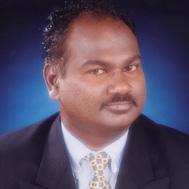
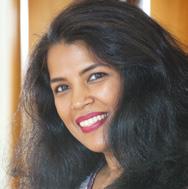
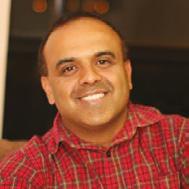

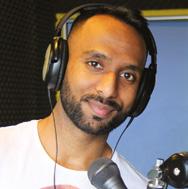



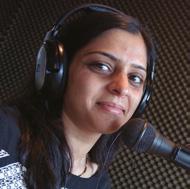



Self-discipline is the magic power that makes Melbournian Priya Singh virtually unstoppable. Discipline and determination helped her all the way as she successfully completed the recently held 145-km RACV Great Ocean & Otway Classic Bike Ride. Starting and finishing at Torquay, this is Australia’s premier and most spectacular ride, and has been running for over a decade. Almost 4,000 riders participated this year, among them our very own Priya.
“The 145-bike challenge was something I wanted to do for myself,” she told Indian Link. “There were many elevations on the way and the going was tough but I persevered. When I managed to finish without any issues, I was so happy I cried. It felt so good.”
Cycling for the body is like Sudoku for the brain: both offer great exercise and stimulation as well as slow the cognitive decline associated with age.
For Priya, the benefits of getting into the

She was recently diagnosed with osteoarthritis in the left knee, so running was out due to its adverse impact. She chose low impact cycling instead, as it was easier on her joints.
Priya, who has always maintained a healthy lifestyle, stepped up several notches in preparation.
Weight training, personal training, spin classes, ungodly hour bike rides on Brighton beach and a strict protein-rich diet became the Holy Grail.
She started her recreational ride training with the 60-km Otway Classic, followed by the 100-km Around the Bay in October 2017 and finally the Otway Classic 2018.
People have so many competing priorities that exercise gets pushed down the list but not so for the Singh family. For them, fitness takes precedence over everything else.
That combined with a love of the great Australian outdoors means bulk of their recreational activities involve stepping out together.
“A week before my Otway ride we participated in the half distance triathlon challenge held at St. Kilda where my husband Anoop did the 1.9-km swim, I did the 90-km bike ride and Ayesha, our

daughter did the 21-km run. It was a great team effort,” said Priya with characteristic enthusiasm.
Priya bristles with energy at any given time whether she’s sweating it out at the gym, holding personal training sessions for friends to motivate them to improve fitness, looking after her children or joining her other half for his Ironman challenges.
Hubby Anoop Singh has successfully completed several Ironman challenges with the most recent one done and dusted in Paris this April. Priya was there with him cheering him all the way to the finish line.
Anoop for his part also accompanied Priya pedal to pedal through her demanding Otway classic ride. “It’s a tough ride for a rookie and it would have been impossible to do it without his support,” she said gratefully.


Luckily for Priya there were no tire punctures. “I am no good with that kind of stuff. Riding, yes! Fixing? Oh no!” she laughed.
The cyclist is gearing up to participate in more recreational bike events this year including Around the Bay in a Day event scheduled in October.
Priya believes that everyone, especially Indian women ‘of a particular age’ should get moving before it’s too late. She is eager to promote bike riding among her peers.
“We live in the most beautiful city in the world. Make the most of it by getting active: walk, run, bike and experience the great outdoors. You will never regret it and your body and mind will be fitter, healthier and happier,” she said as she set out for another gruelling training session at the gym.
Priya believes that everyone, especially Indian women ‘of a particular age’ should get moving before it’s too late
Over 100 movers and shakers who love Bollywood dancing got to shake their hips for a very special purpose recently.
They were participating in ‘Dance for Dignity’ workshops, initiated and led by the not-for-profit Disha – The Direction to Hope. The aim was to support women and girls in Melbourne who find themselves in a financial crisis and homeless due to domestic violence, forced to choose between buying food and essential sanitary items.


“Our mission is to reach out and touch the community and help where we can,” shares Somya Rastogi, who co-organised the event with Meera Rastogi. “This time we wanted to support women who experience domestic violence. Since we are an Indian-Australian organisation, we thought we’d do a Bollywood workshop to raise funds for the Essential Items Pack.”
She adds, “We wanted to bring about awareness and change within our community - and beyond - that women and girls who are homeless, facing poverty or in violent situations, are going without basic sanitary items.”
The enthusiasm was palpable on the floor at the venue Skydeck in Prahran. The tickets for the event were sold via social
media, open to public and included Disha family and friends. The first workshop titled ‘Bolly-Beats’ had 40 participants groove to mainstream style with Laila Main Laila. In the second workshop called ‘Bolly-Street’, 65 participants learned to dance Indian-street style to Kaala Chashma. Each hour-long workshop was directed and pre-designed by Studio J Dance Artistic Director, Gerard Piggy, and his assistant Zoe Arsana.
The wannabe dancers were given hip scarves and sunglasses to raise the enthusiasm. “It was challenging and fun,” recounts Somya. “Everyone walked away having learnt a one-minute
choreographed sequence.”
Meera observes, “We had a good mix of Indian and Australian community from a wide age group, old and young, including kids and some men join us, which was great.”
Disha is reputed for designing events by collaborating with organisations to support and raise funds for cancer and other worthwhile causes. They connect with teams who are experts and already doing solid work for the community.

“Whether it’s equipment or consumable items, we are involved from start to finish in terms of actual distribution to those in need,” says Somya.
This time they chose national organisation Share The Dignity, whose team enables mobilisation and distribution of sanitary items to women and girls in relevant shelters and crisis homes, who are homeless, at-risk and in domestic violence situations. They started work on the event over three months ago, approaching Share The Dignity in March and were guided by Terry Norris, Events Queen Volunteer, on tangible ways in which to support them.
The ticket cost from each participant, valued at $30, was used to create an Essential Items Pack filled with 11 sanitary and personal hygiene items: shampoo, conditioner, toothbrush multipack, toothpaste, sanitary pads, tampons, hair ties, body wash, soap, hand sanitiser and deodorant. Participants also brought in large pre-loved handbags in which an Essential Items Pack would be placed for those in need.

An event of such nature is impossible without its sponsors and supporters, says Somya, thanking the three major sponsors: Desi Dhaba and Tandoori Times who funded the dance teachers and venue, and Chemist Warehouse (Geelong & Corio Stores) which filled the Essential Item Packs. Other sponsors included Zingalala (additional sanitary items), Touché Cafe Bar (Cakes), Woolworths Mornington East Store (Fruit), Oakleigh Donut Company, Fern Textiles (Bottled Water) and Danielle Allison (Photography).
The lucky draw prizes were supplied by Studio J Dance, Lajeen Make Up Artistry, Big Bottle Co, Zingalala and Toscano’s. Over 100 packs would be distributed as part of this initiative by Disha and Share The Dignity.
Wish to support Disha? Find out more at www.disha.org.au
We wanted to bring about awareness that women and girls who are homeless, facing poverty or in violent situations, are going without basic sanitary items Somya Rastogi, Disha
It’s so simple to be happy, but it’s so difficult to be simple. But Aussie couple Mark and Cathy Delaney and their two children, Tom and Oscar have definitely disproved what Rabindranath Tagore once said.
For the Brisbane-based couple, who moved to Barapullah (Delhi) years ago and now call a modest one-room accommodation their home, simplicity is a way of life. Mark and Tom’s book, Low Carbon and Loving It is a testament to that.

Based on sustainable living, their observation of Australian lifestyle and personal lived experiences in Indian slums, the book is a collection their unique perspectives. The Delaneys hope that it would contribute in some way to reverse the devastating impact of climate change. Only in their case, they practise what they preach.

“We share a fairly small room with one fan, one light, and a few electrical devices using little electricity. As do our neighbours,” says Tom. “Australians
consume a lot more, in large houses with air conditioning and running pumps for their pools. Our poor neighbourhood has made me acutely aware of how wasteful we are in Australian society.”

According to them, an average Australian consumes 23 tonnes CO2e to the Indian normal of 2.3 tonnes. The father and son were shocked when they visited in 2014. “People were still leading high carbon lives. We wanted to alert people to the gravity of the situation,” says Mark.
“We need to come to a sensible middle ground,” adds Tom. “High carbon luxuries in the west like car, meat consumption, flying that are seen as necessities, actually aren’t. We don’t want to romanticise poverty yet we note our neighbours remain remarkably content even though they don’t have all the stuff we have there.”
Their book weaves in their Indian storyline, lays out the problem of climate change and offers practical recommendations on reducing carbon footprint in six areas - the stuff we buy, diet, local travel, long-distance travel, electricity consumption and accommodation.
Their story begs the question, how did all this happen? “Cathy and I had this moment of epiphany during our university years: life isn’t all about getting the big job and the big
salary and feathering your own nest,” says Mark. “It’s more about trying to serve and care for other people, taking a broader view of society.”

The Australian-born couple’s decisions were in tandem even before they met. After completing his legal studies, Mark decided not to be a lawyer, he felt it was a hectic path more focused on money than people. Cathy opted to work with homeless kids in Brisbane, after a degree in Mathematics and Computer Science.
With similar mindsets and Christian faith strengthening their resolve, the pair left a comfortable existence in Brisbane to move countries and into a tiny one-room dwelling in Barapullah, Delhi, where they lived, birthed and raised their sons Tom, 21, and Oscar, 16.
It was an immersive experience from the word go. “We were sensitive about not being the foreign expatriate know-italls, barging in to fix problems without understanding the situation,” says Mark. “So we first spoke to Indian friends and colleagues, learnt Hindi to be able to speak to ordinary Indians, committed to living here for a long period, and we have always worked with local organisations.”
Mark used his degree to help the disadvantaged get various entitlements
from the Indian government. Moving from an advanced country to a developing one was a big adjustment, but it wasn’t too bad. “As Aussies, we have grown up camping so our lifestyle here is a lot like permanent caravanning. Small space, be tidy, walk to the toilet block, bring water,” says Mark.
The real alterations were in always appearing different, adapting to culture and learning Hindi. “For an introvert like me, it was hard dealing with the sheer number of people who approached us wanting to talk, saying Angrez, angrez kahan se aaye hain?” he laughs.
Cathy had her own path to chart as a white-skinned woman and being perceived as morally open-minded. “I was 30 when I first arrived and had a lot of men staring and touching, those kind of things,” she recalls. “There was a lot of adjusting in the early days, a very different cultural setting to get used to. Simple, external things like my way of dressing, how quickly I walk, who walks in front.”
Her Muslim neighbourhood necessitated a vital style change. “Early on, I realised that being viewed as

The Aussie family that calls a Delhi slum home finds that happiness has new meaning for themBarapullah slum
someone with moral standards made a big difference to my life,” she confesses. “I almost exclusively wear salwar-kameez and a dupatta, and cover my head outside.”
She won brownie points for sewing and cooking. “It would be different if I was hopeless at cooking,” she jokes. “I really enjoyed traditional handcrafts of women, it gave me social credit. In those ways I could fit in, and in other ways I couldn’t.”
In contrast, Tom’s childhood experiences were seamless and filled with memories of classic Indian games like Ludo and cricket. “Children are quite good at looking past differences in skin colour,” he says. “I was conscious of being white and my friends being brown but differences weren’t that deeply ingrained since I’ve grown up in this environment and am fluent in Hindi.”
Yet the cognizance of stark disparities in their lives still existed. “Though we lived quite simply, I’ve never been hungry any day in my life whereas many of my neighbours have,” Tom says. “I had nice toys to play with, they didn’t. It does make a profound impact when your friends don’t have enough to eat sometimes.”
“When Tom was 10 or 12, he felt after
Delaneys family room (l to r): Tom, Cathy, Oscar and Mark
visiting friends in our neighbourhood that our house was so big, but after visiting our American friends in another suburb, that it was so small,” Cathy recounts. “A simple observation on how relative life is, you interpret things differently depending on who you hang out with. We grew up thinking life in Australia is normal and our kids have grown up thinking it’s not.”
Do they feel Australian or Indian?
“We largely feel Australian although back home, we don’t,” Cathy says. “We are also less and less nationalist, I guess. These labels seem silly, we see issues in a different light now.”
Mark admits he thought they would head back to Australia for the kids after a few years, “be normal, get a job and buy a house”. Then the couple realised that raising them in a poor neighbourhood

was actually a very good parenting setting. “Our children are really grateful for the things they have since they see contrasts with friends who have far less. They hold a very broad and nuanced perspective on life,” says Mark.
“They weren’t deprived,” clarifies Cathy. “Everything we felt was important for our children to have, they have had. We spent lots of time with them, always had wonderful family holidays, good friends, met grandparents and relatives back home every few years.”
For the most part, different friends and family members helped the Delaneys survive with $20, $50 or $100 dollars a month. “We live frugally, it doesn’t take many dollars to live in a basti. Sometimes, we qualify for benefits from the Australian government, at times we worked in
Australia and saved money,” Cathy shares. Though the family had financial requests from neighbours, and organised funds for them, they kept the footing equal. “We always need to find ways of mutuality. It’s important to recognise that living here we receive a lot from people in culture and spirit,” says Tom.
Two decades on, they are all still stationed in India and he is carrying forward his parents’ legacy of service working with a literacy organisation, Devi Sansthaan. Mark points out, “Desire, consume, repeat is the mantra of our capitalist society. It creates artificial desires, saying this product will make you happy. That is a fundamental lie. Happiness does not come from a new product or feature. Happiness comes from relationships, nature and from living a peaceful life.”
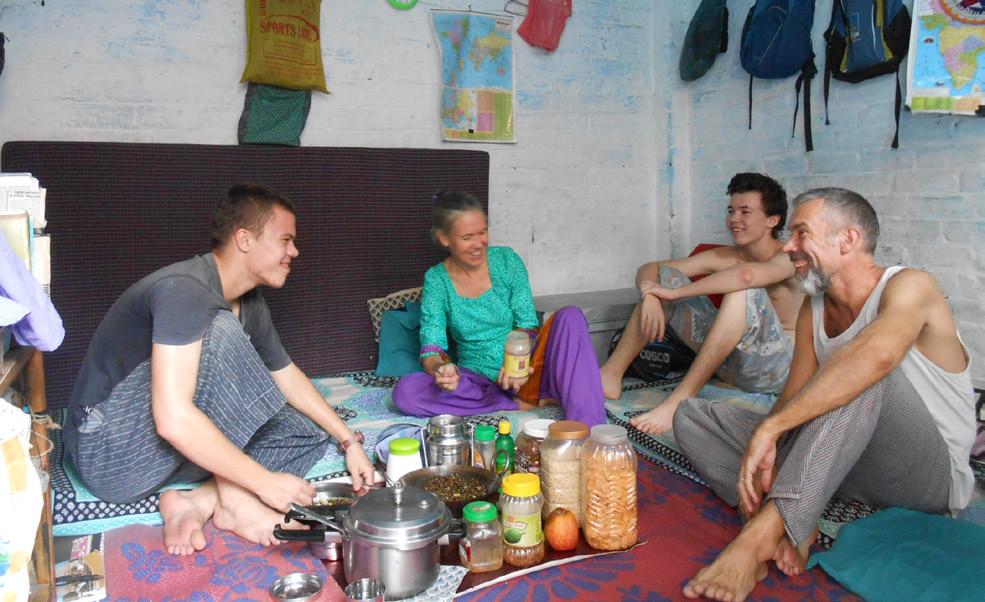
We share a fairly small room with one fan, one light, and a few electrical devices using little electricity. As do our neighbours


“Never trust a politician or a woman.” These are the words of the ancient Indian philosopher and jurist, Chanakya, who authored the renowned political treatise Arthashastra, around 3rd-4th century BCE. Unfortunately, Chanakya was far from alone in his mistrust of women.
If there’s one thing that stays constant across cultures and centuries, it is the idea that women are fundamentally untrustworthy. The Greek philosopher Aristotle, whose writings have had enormous influence on both the western and middle- eastern world, called women “more jealous... more shameless... more deceptive” than men. In the Christian world, women are tainted by Eve’s so-called ‘original sin’: her weakness evidence of all women’s suspect characters. Even Sita, that paragon of South Asian feminine virtue, is asked not once but twice to prove her faithfulness to her husband, Rama, by walking through fire.
One could laugh this off as sexist mythology, but these ideas have continued into the modern world. Consider Australia’s first female Prime Minister. The most damaging and pernicious criticism of ‘Ju-liar’s’ reign was her ‘untrustworthiness’ due to her removal of Kevin Rudd. Australia has removed 14 prime ministers since Federation, including Tony Abbott by our current PM, Malcolm Turnbull. Yet it was Gillard, the woman who became synonymous with ‘backstabbing’.
The trope of the untrustworthy woman manifests itself in the everyday lives of women too. This is clear when we look at crimes that disproportionately affect women, like domestic violence, sexual harassment and rape.
Take, for example, the Supreme Court of India ruling on ‘false’ domestic violence cases last year: “Most of such complaints are filed in the heat of the moment over trivial issues”, it

myths about women and their reliability come into play to derail the serving of justice.
Take this stat, for example: only one in 10 of sexual assaults reported to the police result in a guilty conviction, according to a report by the Australian Institute of Criminology.
BY MATT KEANNot just this, over 70% of sexual assaults aren’t even reported to the police because women
because the woman is not believed.
A study of juror attitudes bears this out. Given that the issue of consent is contested in rape trials, credibility is what jurors depend on. And as we’ve seen, history disfavours women when it comes to displaying faith in their trustworthiness. This history and the prevalence of stereotypes of the untrustworthy woman influence beliefs and actions. A report into juror attitudes conducted by the Australian Institute of Criminology in 2007 concluded; “Many of the jurors in the study not only brought their own beliefs and misconceptions about rape into the courtroom, but also interpreted the complainant’s testimony in light of them..(this) highlights the need to identify the nature and prevalence of beliefs about rape and sexual assault held more widely within the community.”

A flourishing society also requires more than just freedom of speech; it requires security, stability, a just legal system and a vibrant economy.
That is why freedom of speech is not absolute. In this country, it is criminal to disclose secrets which risk the lives of Australian soldiers. It is likewise a crime for a corporate executive to disclose market sensitive information to his mates. The law protects us from slander and protects privileged comments made to our lawyers.
As a society, we recognise that these restrictions do not hurt our democracy or way of life. Indeed, we understand that they are necessary to maintain it. And laws against hate speech are no less necessary, because racism and bigotry tear at the heart of our social fabric.
their memorandum to the Chief Justice of India, women’s groups stated, “We are deeply concerned and dismayed that the entire judgment proceeds on the basis that women are liars and file false cases.”
Views like this aren’t limited to India. Women all across the world, including in Australia, face barriers when trying to access justice. Sexual crimes are already hard to prosecute because they are usually committed in private. In situations where it is the woman’s word against the man’s,
The proposed amendments to the Racial Discrimination Act were put forward on the basis that the current wording of Section 18C inappropriately constrains our freedom of speech.


fearful that they won’t be believed by police. And even if they do, the system will let them down.
And they’re not wrong. Defendants who plead not guilty to sexual assault are likelier to be acquitted than defendants who plead not guilty to other crimes. In 2006 nearly 60% of defendants who pleaded not guilty to sexual assault were acquitted vs. 25% for drug offences or 45% for homicide. Simply put, when a man sexually assaults a woman, it is highly likely he will get away with it, in large part
That section makes it unlawful to do an act in public which “is reasonably likely… to offend, insult, humiliate or intimidate another person or a group of people” if “the act is done because of the race, colour or national or ethnic origin of the other person
There is no doubt that freedom of speech is important but it is important because of the role it plays in our democracy. Freedom of speech ensures that when you or I go to the ballot box we can make an informed decision about who to vote for.
Things have begun to change, albeit slowly. The #MeToo movement has been key to this, not only giving women voices, but finally giving them a chance to address the impact of being mistrusted. After the Bill Cosby verdict, one of the accusers, Lili Bernard said, “Today...the #MeToo movement is saying that women are worthy of being believed.”
Racism and bigotry leave people feeling exiled in their own home. They do not improve the quality of public debate nor do they assist the wise completion of a ballot paper. They are insidious because they attack a person because of their identity; their heritage. They imply that a person is inferior because of who they are. They are hurtful, divisive and can lead to individuals and entire communities feeling unwanted, unvalued and second-class.
Let’s hope that this is just the beginning of recognising how harmful, pervasive and long lived sexist stereotypes are. It is only by critically examining and expunging these stereotypes from our literature, culture, faith and political systems that we can give gender equality a real shot.
As a society, we recognise that restrictions on free speech do not hurt our democracy or way of life. Indeed, we understand they are necessary to maintain it. And laws against hate speech are no less necessary, because racism and bigotry tear at the heart of our social fabric
Freedom of speech is necessary so that as a community, we can debate political ideas and so that individuals can have a say on decisions that affect them.
Section 18C ensures that everyone has a role to play in that debate.
Comments today can also revive memories of past wrongs. Unfortunately, few ethnic groups have been spared the pain of racially justified persecution. Examples such as slavery in the United States and the Holocaust are well known. In recent times, the a vibrant, rich and diverse society. A society not focused on the differences between us, but founded on the strengths our differences afford us. Section 18C stands, not as a threat to freedom of speech, but as a protector of the purposes which that freedom serves, and as a guard to an achievement exceptional in this time and rare in times before.
MattKean is the Member for Hornsby and Parliamentary Secretary for Communities.
differences, their love is consummated and Shabana conceives a child.












 BY PREETI JABBAL
BY PREETI JABBAL

Born in Kolkata and raised in Melbourne, Nandita creates a multigenerational drama that unfolds during the early ‘70s, a relatively dark moment in India’s political and social history.
Nandita weaves an interesting story of romance between Australian diplomat Ted and his Indian maid Shabana. Their love blossoms despite the censure from Shabana’s conservative father and manipulations of Ted’s ambitious mother.
Unfazed by the class divide and cultural
Unfortunately, there is no happily ever after in sight as Shabana is forcibly married to her cousin and Ted is sent back to Melbourne.
The baby girl is sent to an orphanage to be later adopted and raised with great pains taken to keep her parentage unknown. When the secret is finally revealed it creates bitterness and a desire for retribution.
Like Rosemary’s life, the book doesn’t end with everything tied in a neat bow. There are a few loose ends left, particularly Rosemary’s revenge.
Despite the title, the retributive elements are only briefly touched upon as bulk of the text is dedicated to the story of her parents’ unconventional relationship.
A deliciously plotted revenge story to





get your reading pulse up it isn’t but the twists and turns in the story will keep you curious enough to turn the page.
Don’t expect to linger long in Rosemary’s revengeful mind, instead lose your way in exploring her family secret that makes her reach that combustion of injury and rage.
This is Nandita’s third book since her foray into the publishing world.
Her previous books Missing Peace Love, Life and Me (2013) and Meera Rising (2017) had a common thread of women struggling to free themselves from constraints -- particularly religious, social and cultural -- imposed by others.
On a more personal note, Nandita’s insights stem from the curve balls thrown her way by her own life since migrating to Australia in 2000.
She has braved through a combination of heartbreak, broken relationship and a debilitating cognitive disability to find courage and inner peace.

Her heroines are vulnerable and honest like her and they share their personal struggles to help others grow.
From an unscrupulously run orphanage in Kolkata to a manipulative benefactor in Melbourne, Rosemary’s journey is that of sorrow and secrets but Nandita tells it with empathy and warmth.




This issue we ask the question: what does Ramadan fasting mean to you, and how do you manage it with your work/study routine?
Beheshta Wasseh Sydney
I love Ramadan as it brings the family together for a meal. Everyone is so busy with their daily lives, but we make sure to break our fast together. Fasting isn’t too bad as iftar is just before 5.00pm, better than Germany where the sun sets after 9.00pm! I’m grateful for the short days as this year Ramadan has fallen near the busy exam period at university. It’s funny when I’m fasting and my friends don’t want to eat in front of me, as the whole point of Ramadan is to experience the hunger that less fortunate people face. It definitely makes me appreciate how fortunate we are to always have food and water on the table.
Nayna Pinata Sydney
I work full-time in a pretty hectic and reactive environment and get pulled in all different directions throughout the day. My workplace is quite flexible and open to different cultural and religious commitments. Outside of Ramadan I usually start around 8.30am and finish by 6.00pm. However during Ramadan I organise with my team to start around 6:30 – 7.00am. I wake up for sehri (suhur for some) and instead of going back to sleep I head to work. I finish work around 3.30pm which thankfully gives me enough time to make it home for iftar with the family. My team makes
sure our meetings are scheduled around my Ramadan times and I also get the opportunity to work from home some days. As a thank you, I bring them a ginormous platter of biryani after Eid!
Shafeen Mustaq Canberra
Luckily this year in Australia fasting is quite short - 11.5 hours, most of which is spent at work where I don’t feel it unless someone’s eating something particularly fragrant! Fasting in Ramadan has such a focus on detoxing and learning more about the Islam that it is easy to work, play, pray and even organise charity iftars and dinners to raise funds for those in need.
Our charity in Canberra called Sitara’s Story is raising funds for mental health awareness among Bangladesh youth to address suicide rates. Collective humanity is what gives me purpose and drives balance in Ramadan.

Nadeem Ahmed Sydney
During Ramadan, we wake up for sehri before dawn, then pray and then head straight to work. I have very supportive employers. They give me flexibility to leave early so that I can be home it time for iftar, and allowing time for prayers is great. As an employee, I feel much more motivated and content with
the job. Once I’m back home for iftar, it’s time to be with family. I love the bhajiyas, kebabs, tandoori, and the list goes on! I also love the food at Lakemba streets. Personally, Ramadan is an opportunity to stop, pause, think and reflect on my actions, my deeds especially in this fast-paced, materialistic life we liverunning around jobs, money, stressing about little things in life which we don’t have control on. Ramadan is not just about not eating or not drinking. It’s about your whole being, how you live, behave and act. I try my best for all of these, do a spot of charity, fast, pray, try to abstain from all my bad habits.


I love how Ramadan is a spiritual, mental and physical detox where I work on my soul, thoughts and body! I love that Ramadan makes me reflect on myself and my surroundings. In this world of comparison, consumerism and social media I lose touch with what’s important in life. Ramadan forces me to realign myself with what’s important in life and reflect on my connection with God, family, friends, my community and others in this world. It’s not always easy, but I come out of this month ready to take on another year of improving myself spiritually, mentally and physically.

During Ramadan I get to work a bit earlier so I can get home in time for iftar and prayer. I take the travel time to and from work to make my daily dua and reflect on all the things I’m grateful for. I also make time to socialise!
As a child, I was taught that Ramadan is the month of Allah – a spiritual month of forgiveness, charity and prayers. Whatever you desire in life, if you ask for during this month, Allah will make it happen. Fast forward to today, and I still uphold these values. It is also a month of togetherness; we come together to pray, break bread, and share our Ramadan experiences.
Health reasons have prevented me from fasting in recent years. However, during Ramadan, I ensure that I remain extra mindful about what roza means, and I try particularly hard to live the values of Ramadan. For example, I ensure that my meals are much smaller portions, and that I don’t continually snack during the day. I try my best to ensure that clean eating is pivotal to my daily routine, so I ensure my food is ethically sourced. At the end of the day, I don’t binge eat - as the purpose of Ramadan is to demonstrate moderation. I
try to temper my thoughts and behaviour to ensure that I am charitable in my thoughts and deeds. Sometimes I fail, but the important thing is to keep trying. And during the day, I focus on how blessed my life really is - and I make a point of buying a colleague lunch, or I bring in fruit for the cleaners at work.

I believe in observing all the rituals as per our tradition. I wake up very early and try to get my children to do the same. I then complete the wuzu, sahoor and recite my tahajjud prayer. I try not to sleep as that defeats the purpose - you are meant to experience the hunger, and sleeping makes it easier. I pray most of the day as this is the time to connect to Allah Miya with full devotion. I do all the five namaaz and try to avoid spending time on recreational things like socialising or watching TV as this is time to pray. I break my fast at sunset with dates, fruit chaat and sherbat My family looks forward to the pakoras (fritters) that are cooked at our place during Ramadan.
It has been scientifically proven that detoxing the human body for a month is beneficial to health and we Muslims have been doing this for hundreds of years. My children have all been raised to observe Ramadan fasting and they all continue to do so as adults. This is a very special time for my family and me.
t ha een cientificall p o en that detoxing the human body for a month i eneficial to health an we Muslims have been doing this for hundreds of years Shehnaz AkhtarShehnaz Akhtar Beheshta Wasseh
and that’s why they asked me to come on board,” she adds.
BY NEHA MALUDEIn a bid to celebrate mothers all over the world, irrespective of colour, nationality or creed, a new coffee table book titled Amazing Moms features 115 mums and their heart-warming stories released this Mother’s Day. Tejaswinee Barua Kakaty, a 30-something Indian mum who lives in Brisbane with her husband Jnanjit Kakaty and three-year-old daughter Anaya, is one of those mothers.

The book, authored by Hogan Hilling and Dr Elise Cohen Ho aim to inspire conversation about the refreshing, positive images of 21st century mothers as responsible, competent, active and nurturing parents. Talking to Indian Link about how she came to be featured, Tejaswinee says, “I’m an active blogger and part of several writing groups online. I’d heard that Hogan and Elise were looking for women interested in being featured and so I wrote to them.”
Tejaswinee, a technical business analyst and an emerging children’s author who hails from Assam, said the duo had never heard of the Indian state. “That, and the fact that I was an engineer who loves writing also piqued their interest,
Every mum featured in the book answers questions related to motherhood, such as ‘What do I do well as a mom’, ‘Mom I admire’, etc. “My mothering skills come from seeing my mum and grandmother. They aren’t just admirable mothers, but individuals too. Mum was a school teacher and it wasn’t common back in the ‘80s. She would always make time for us and return during her lunch break so she could look after us. She’s the one who taught me how to balance work and home. And my grandmother –she’s an inspiration! She got married at 14 and couldn’t read or write, but with my grandfather’s help, she graduated and went on to teach Hindi, which in Assam
was a rarity. She was even a freedom fighter during India’s independence movement,” Tejaswinee says.
Two of her favourite questions from the book are ‘What’s the lesson you’ve learned from your child’ and ‘Your most successful motherhood moment’. To the former, she simply says, ‘To be happy. I remember when Anaya was very sick for two straight weeks, but never in that time did she seem unhappy. I realised then that being happy comes from within. That’s the best thing she has taught me.”
As for the latter, Tejaswinee’s most successful motherhood moment isn’t quite what one would expect. “I love making origami butterflies,” she tells us. “And so one day, while Anaya slept, I made a huge bunch and put them right next to her. When she woke up, she had this gobsmacked look on her face, kind of like Sushmita Sen’s Miss Universe moment, and it was the best moment ever,” Tejaswinee laughs. “I count that as my success – being able to make her smile
with such a small gesture. It’s the small things for me.”
Tejaswinee also talks about Alicia Trautwein, another mother featured in the book, whom she came to admire. “Alicia is based in the US and she started a beautiful movement called #WeLoveMoms that raises funds to distribute this book in charities for women. The idea is to inspire them through stories of motherhood from women who are just like them.”

Her mother and grandmother, however, top the list of the people she admires. “They are the ones who’ve have inspired me to be strong and have taught me that ‘the power is within you, always’. As a mother, I will try my best to pass on these values to my daughter. And I’m sure this book will inspire mothers all over the world,” she concludes.
Amazing Moms – Parents of the 21st Century released on May 13, Mother’s Day. The book is available for pre-order on Amazon.com.

The book aims to kickstart conversation about the refreshing, positive images of 21st century mothers
Brisbane-based Tejaswinee Barua is one of the 115 mothers featured in an international book for this Mother’s Day

We’re loving our re-read of Roanna Gonsalves’ rst book The Permanent Resident, which this month won the Multicultural Prize at the NSW Premier’s Literary Awards 2018, and which has been longlisted for the Dobbie Literary Award for rst-time authors. The short stories in this work are about what it means to be an Indian migrant in Australia, but as Indian Link’s reviewer Salma Shah argued, they could just as well be about what it means to be Australian.
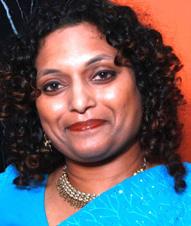

Now this is clearly different Bollywood lm music. The Raazi album by music directors Shankar-Ehsaan-Loy tugs at our heartstrings with a patriotism that is subdued and nuanced rather than boisterous. Gulzar’s lyrics, Arijit’s soulful voice, Mahadevan’s cameo, Kashmiri couplets, Sunidhi Chauhan’s return to form, Harshdeep Kaur’s earthiness. The touch of folk. The pleasant melody and mellow vocals of Ae watan in both its versions and Dilbaro. Goosebumps…

South Indian food in a mainstream Australian pub? Yes, you read that right! Chef Mischa Tropp pays tribute to his roots by showcasing Keralan cuisine at its nest at The Rochester, Fitzroy. Feast on traditional Kerala favourites like Chicken Ghee Roast, Beef Roast, Kadala Curry and Thoran, along with matching wines and beers. Try also the modern interpretations of South Indian avours like Duck Hearts, Con t Parsnips, Carrot Ada and Goan sliders. After decades of mediocre Indian curry houses, it is refreshing to see this new wave nally giving our cuisine its due in Australia’s culinary capital, Melbourne.

If you’re one of those people who think classical music is ‘too complex for your understanding’, we’ve got some great stuff in store. Meet Anuja Kamat, who’s trying to simplify classical music, making it easy-peasy to understand its nuances. Her videos go right down to the basics of Indian classical, like explaining swara, taal, raag, etc. Check the one titled: ‘On which raag is Ghoomar based?’ that references a song from the lm Padmaavat. The 24-year-old has a YouTube channel called ‘Out of the Shruti Box’ that boasts over 85,000 subscribers. We’ve been hooked, and we promise that you will be too.

From
stunt to CSK’s triumph, a recap of the most memorable moments from IPL 2018
BY RITAM MITRAIndividual brilliance may dominate sport highlight reels, but close competition is what makes a professional sporting league a great one; the more even the teams, the more captivating the journey. Competition is what makes the English Premier League, for instance, the most compelling football league in the world; any team on its day can upset the traditional powerhouses. This year, the IPL – which administrators have openly hoped will soon match the appeal and brand value of the EPL – did its best to
emulate its English cousin, with seven of the eight teams still gunning for a top-four finish in the dying throes of the round robin stages.
With the tournament now at an end, it’s not easy to catch up on six weeks of highlights – so here’s a look back at the defining moments from IPL 2018.
Suspended from the previous two seasons of the IPL for its administration’s involvement in a corruption scandal, Chennai Super Kings, the most successful franchise in IPL history, picked up where it left off, continuing its unblemished run of never missing the playoffs.
Under the helm of MS Dhoni – as it has been since 2008 - CSK once again rose to the occasion, adding a fourth title to their



overflowing trophy cabinet.
CSK’s success in no small part relies in the franchise’s loyal retention of key players, including Dhoni, Suresh Raina, Dwayne Bravo, Ravindra Jadeja and Faf du Plessis. This season though, it was the last of these names who produced the most vital performance of them all – although Shane Watson’s remarkable 117* in the tournament final was in every respect its equal.

Playing just his fifth game in the tournament, and with very little form behind him, du Plessis was an unpopular choice to open CSK’s chase of 140 against the fancied Sunrisers bowling attack. When CSK collapsed around him to 6/62 – and again at 7/97 – du Plessis’ lone hand looked set to be in vain. But the Proteas skipper blasted 22 runs off the 18th over, sealing the match with a six in the final over to bring CSK roaring home.
Over the years, each time the Kolkata Knight Riders have taken to the Eden Gardens pitch, a Khan has always taken centre stage. In the second qualifying final between KKR and the Sunrisers Hyderabad at the Eden Gardens however, it was not KKR owner Shah Rukh, but Afghan teenage sensation Rashid Khan who reigned in the far East.
The Sunrisers were teetering at 6/134 in the first innings when Khan entered
the fray. Over the course of 10 balls in the last three overs, the 19 year-old launched a stunning assault, and blasting four sixes in an unbeaten 34* to lead his team to a competitive 174.
Later, with KKR cruising at 10 runs an over and the match slipping away from the Sunrisers, Khan once again took centre stage: first with a run-out, then with three vital wickets - and two catches for good measure.
The accolades soon began to flow in for what was undoubtedly, given the context of the game, the best all-round performance in the history of the IPL, if not T20 cricket at large. Sachin Tendulkar labelled Rashid “the best spinner in the world” in this format, while the greatest of all time, Shane Warne, said Rashid gets him “excited” more so than any other tweaker.
AB de Villiers is by some distance the most widely-loved cricketer in the world, but in India his popularity is in another echelon altogether. De Villiers’ motivation for top flight cricket may have waned in the last year or two, but his prodigious talent and almost nonchalant superiority remain very much intact.
If any proof were needed of this, de Villiers – who recently announced his retirement from international cricket following Bangalore’s bitterly disappointing campaign – dished it out in spades this

season. With the bat in hand, Mr 360 was at his innovative and destructive best, notching up six fifties and blasting more sixes per innings than any other player.
Then there was the catch. Stationed
on the mid-wicket boundary, de Villiers looked destined to be a spectator when Englishman Alex Hales launched a Moeen Ali delivery into the night sky. But de Villiers has never stuck to script; instead, he launched himself upwards and to his right, and fully outstretched, plucked the ball one-handed out of thin air, contorting his body to land within the boundary.
It was a catch even Virat Kohli found difficult to comprehend, and one that may merit a crossover for cricket’s Superman from DC to Marvel. “AB’s catch was Spiderman stuff, you don’t do that as normal human beings,” said Kohli.
It’s unclear whether de Villiers will return to the IPL stage; he has made it clear that his retirement was not motivated by a desire to sign lucrative overseas league contracts. But if he does not, he left where he began: at the top of his game.
If T20 cricket is by its nature a batsman’s game, then IPL 2018 has belonged to the glovemen, with Dhoni, KL Rahul, Dinesh Karthik and Joss Buttler all enjoying their most productive-ever seasons with the bat. But from an early stage, it was 20 yearold Rishabh Pant who set the tournament ablaze, eventually picking up the emerging player of the tournament award after scoring nearly 700 runs at the staggering strike rate of 174.
One of the few bright spots for Delhi’s miserable season, Pant has staked a major claim for a more regular spot in India’s limited overs sides. Pant’s brutal 63-ball 128* against the quality Sunrisers bowling attack was the innings of IPL 2018, despite the stylish left-hander’s penchant for running out his teammates – but Pant also peeled off five other fifties and a tournament-topping 37 sixes.
AB’s catch was Spiderman tu ou on t o that a normal human beings





























































































































































































Khichdi, a quintessential winter dish from the Indian subcontinent that ironically, isn’t considered the perfect meal just for the cold season but every season. The reason is simple: it’s a comfort dish, and comfort is never season-dependent, is it?
A savoury, creamy, mish-mash of lentils and rice, tempered with spices and aromatics and a final drizzle of pure ghee.
While khichdi is a very popular dish in many parts of northern and north-eastern India, it is not so common down south where there are other rice and lentil dishes that are much sought after. It’s a fine example of ‘one man’s ordinary is another man’s exotic!’
At its heart, khichdi is an unassuming dish of rice and lentils cooked together, but it’s the tempering that makes all the difference. It can be as simple or as complex as you want and in my opinion, the flavour profile of the khichdi depends on it.
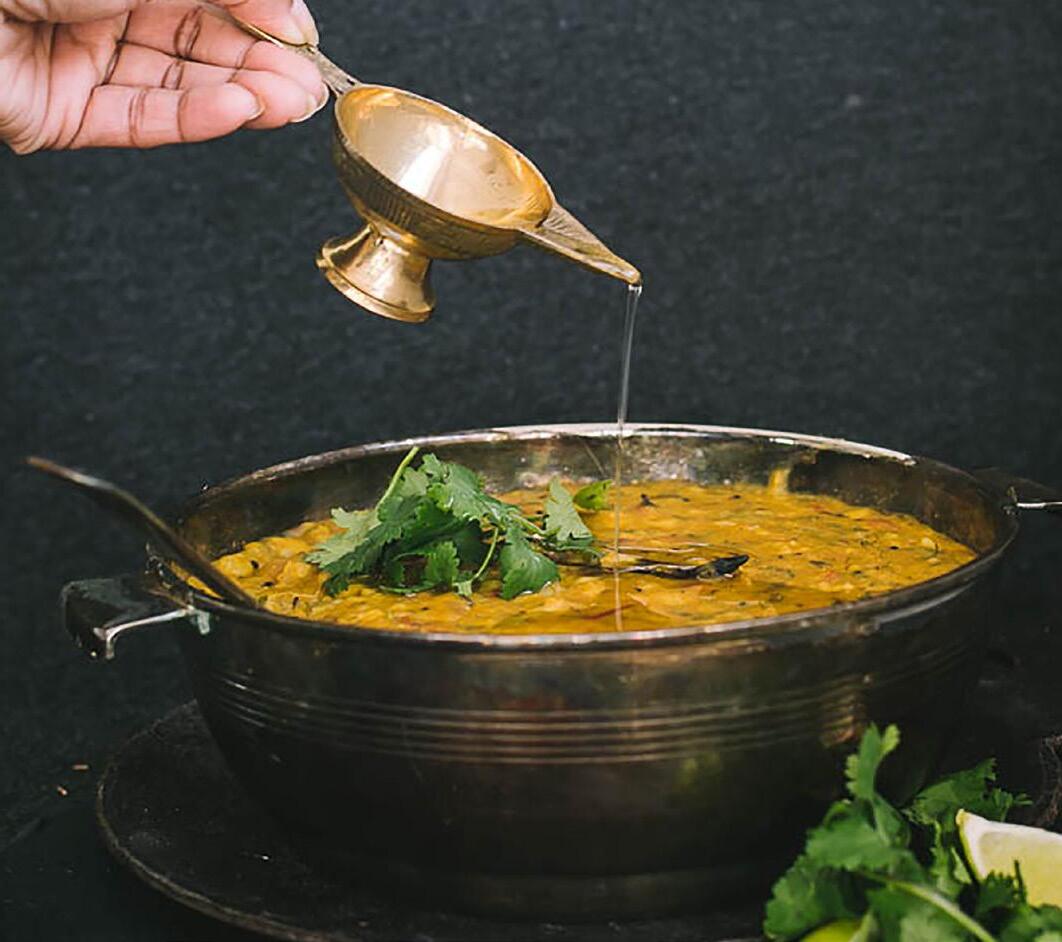
This version of the khichdi is not the most traditional but neither a fusion. It
is perhaps an amalgamation of various styles based on flavours and spices that I like best.
Khichdi is an extremely healthy dish because of its powerful combination of carbs and proteins. Although usually prepared with just one type of lentils, this version has a mixture of lentils and pulses along with some sort of greens like spinach, fenugreek or even carrot greens. You can either make a mix of the lentils from what you have at home or pick up a packet of the soup mix that is easily available in all supermarkets. Or use just one type of lentil, it’s up to you. When using a soup mix, it’s best to soak it overnight so that it cooks a lot faster. Carrot greens, which have recently garnered a lot of attention with the raw food movement, are often found as an ingredient in salads, pesto, etc. But I also love using it in my dal (lentil) preparations just the way I would use spinach. Beetroot leaves can also be used this way but need to be cooked more than the carrot greens.
Even though I pressure cook the lentils and rice for time constraints, I always slow cook for a good 15-20 minutes after adding the tempering. A bit of extra time only helps intensify the flavours which I really want from my plate of khichdi. And a final drizzle of hot ghee is an absolute must!
Ingredients
1 cup mixed lentils; washed and soaked overnight
½ cup medium grain white rice
Carrot greens (I used the greens from 4 small carrots); chopped

Salt, to season
Ghee/clari ed butter; for serving
2 tbsp coriander leaves; nely chopped
For tempering
2 tbsp ghee/clari ed butter
2 tbsp vegetable oil
1 tsp mustard seeds
½ tsp cumin seeds
½ tsp caraway/shahi jeera seeds
2 dry red chilli
3 large shallots/small onion; nely
chopped
1 tbsp grated garlic
1 tbsp grated ginger
2 large ripe red tomatoes; nely
chopped
½ tsp turmeric powder
½ tsp Kashmiri chilli powder
½ tsp red chilli powder
A pinch of asafoetida
½ inch piece of jaggery or ½ tsp
raw sugar
Method
Wash the soaked lentils and rice together. Add to a pressure cooker or
deep bottom pan and cook well with enough water (remember to season with a pinch of salt). The lentils and rice must be cooked enough to be able to mash well.
In another pan, heat ghee and oil; add the mustard seeds and allow to splutter.
Then add the cumin and caraway seeds; as they begin to crackle, add the dry chillies and shallots and sauté till softened._
Then add the garlic and ginger; sauté till the onions have turned light brown. Next, add the tomatoes and cook on medium heat till the tomatoes have softened and turned mushy.
Add all the spices and jaggery; sauté till the whole masala comes together and oil starts appearing at the sides. Meanwhile, mash the lentils and rice using the back end of a ladle or a potato masher.
Add the chopped greens along with the masala to the lentils and mix well; season with salt if necessary. Add more water if necessary and cook on the low heat for 10-15 minutes.
Finish off with the chopped coriander leaves.
Serve warm with a drizzle of ghee on top. Tuck in!
With winter round the corner, khichdi makes for a warm and nourishing meal
Alliance invited for a Hindu-Khatri never married girl, 5’3”, born December 1985. Beautiful, slim, fair, vegetarian. Pursuing PhD in India. Presently in Melbourne at brother’s place. Seeks well settled and educated match in Australia. Whatsapp or call +61 466 984 747, or email 16618k@gmail.com
Match required for a 34-year-old girl Hindu Punjabi girl. Australian citizen, 5’4”, slim and attractive. Never married. Holds a post-graduate degree in multi-media, working in Digital Marketing. Family well-settled in Sydney. Please respond with photos and details to simplepuja2018@hotmail.com





Professional Punjabi Hindu Khatri match for our 26-year-old Australian born, Sydney-settled, vegetarian, law graduate, 5’5”, fair and slim daughter. Please email details to nmatrimonial@yahoo.com
Suitable match for Australian citizen, Sydney-based Sikh girl, 1991 born, 5’5”, quali ed chartered accountant, working for Australia’s leading bank. Parents highly educated and well-settled in Sydney. Please respond to hs52216a@gmail. com
Indian Christian Protestant parents seeking a suitable match for their 38-year-old son, software engineer, born and brought up in Australia. Seeking Protestant girl aged 28-34 years. Email: sammy5073@gmail.com or call on 0403 836 360



Seeking alliance for turbaned Sikh Arora boy, 1987 born, 5’8”, highly quali ed IT network analyst working with top IT rm in Sydney. Parents well educated, mum runs her business and elder brother settled in Sydney. Call on 0401 855 488
We offer catering services for all occassions:



• Birthdays, • Weddings,




• Corporate Events • Puja / Langar
We cater from 20 to 2000 guests and we suit your budget, taste and requirements.


Minal Khona has been reading tarot cards for the last two decades. She uses her intuition and connect with the cards mostly to help people.

You’ve got the best card in the pack so expect good things. Even delays come with the promise of success. If the situation in a relationship is a bit dif cult, let go of it and let time resolve it for you. A trip that could change your luck is in the of ng. Blocks in your career are temporary. Slow down and take it easy if you are feeling tired. Your obsession with a person or situation from the past will end.
April 20 - May 20
GEMINI

May 21 - June 20
If planning to move, you might move closer to your childhood home. A Sagittarius kind of personality in uences you this month so you might be a bit more outspoken and blunt. You want a relationship to be deeper than it is currently. You look for more meaning in everything. Financial gains are indicated through debt recovery. A troubling health condition needs attention. Success through repeat clients and social connections is indicated. Change is in the air through new perspectives.
Focus on passive activities this month. Feelings, emotions and selfexpression dominate and look for creative satisfaction. Time will reveal whether you will split or be together, in a relationship. Stay detached. A pregnancy could be on the cards too. Commit to your career goals and if you wish to get rid of self-destructive patterns, the universe will send help. A tedious or unpleasant situation will be vexing but let it resolve itself on its own. A second occupation proves bene cial.
LEO July 21 - Aug 22




Overall a positive month with a new career opportunity, different from what you have been doing thus far, comes along and leads to success. Be very careful with what you eat as it could cause a serious, life threatening situation. Undercurrents of tension due to unresolved issues at work continue. The key to resolving problems is to stop thinking about them and live in the moment. Money comes from multiple sources. Work related travel and group activities keep you busy.
SAGITTARIUS

Nov 22 - Dec 21
Group activities pertaining to career goals improve work conditions signi cantly. A new romance, work and hobbies keep you busy this month. If in a relationship, you might discuss living arrangements. Avoid binging on food, cigarettes or alcohol for emotional grati cation. You just might be too busy to rest this month. A friend will help you recover money owed to you. Communication channels open up and you let go of any hard feelings. Ideas discussed at work are pro table and inspire con dence.
VIRGO

Aug 23 - Sep 22
You might be in uenced by a Taurean this month and are in a persevering, realistic, down to earth and result oriented frame of mind. You might want to walk away from a painful relationship but are unable to break away and it won’t end despite hurdles. Drive cautiously, and don’t let emotional issues interfere with work. You could have issues with your gums or teeth. A much welcome turn of events in the feelings department makes you feel good.
CAPRICORN

Dec 22 - Jan 19
There is a reconciliation or reunion on the cards this month. You concentrate on self-improvement and getting an image makeover at work. Do not get romantically involved with a lonely person, they could be married. An unexpected trip is successful. An ex might try to win you back. As your fears are assuaged, you will not let yourself be dragged under. Enjoy the validation you receive for your skills and quality of work. A referral brings about a long overdue promotion.
LIBRA



Sep 23 - Oct 22
Life is trying to teach you a lesson to stop repeating a pattern. Let go and let God handle any painful experience you might be going through. You might experience feelings of martyrdom in a marriage; search for a purpose and fresh direction will emerge to make things better. Finances are good. Inner growth and the ability to trust again will be your gifts this month. Let go of a situation or habit that no longer serves your purpose.
AQUARIUS

Jan 20 - Feb 18
Spiritual quests, people, marriage and unions keep Aquarians busy this month. You seek a higher consciousness and maintain a facade to hide loneliness. Your work or health issues take you away from home. You seek a new element in your work as you feel tired and run down but you badly need to rest. Funding is reinstated and work that puts you in the public eye could come your way. An engagement could break. Indulge in a makeover.



June 21 - July 20
Partial success, reunion with an ex, a new relationship or improved conditions in the current one are foretold for Cancerians. A destiny card is drawn for you, so keep your mind open to a once in a lifetime opportunity that might come your way. A short trip proves rewarding and leads to a signi cant encounter. Resolution of inner or outer con icts brings a change in consciousness for the better. A loved one could develop a heart condition. Finances improve too.
SCORPIO


Oct 23 - Nov 21
It is a time for healing, spiritual quests, psychic abilities and intense feelings. You might develop an interest in the occult. A social opportunity presents a chance to meet someone new, maybe even at your doorstep. An unexpected dispute at work or home hassles you but stay calm. Success is foretold through the impression you make on others. A spiritual force heightens your intuition. A trip could get postponed. In a con ict, don’t play martyr and don’t blame yourself either.







Feb 19 - March 20
An old affair could get rekindled, or you just might meet the great love of your life this month. Your struggles to assert yourself at work will end and a new partnership is on the cards. Watch out for impatience and being headstrong in a relationship. A health problem needs a second opinion as it could have been misdiagnosed. Romantic disappointments are short lived. Remember that the universe always gives more than you ask for as you manifest your desires.


Pakistani Brigadier Parvez Syed (Shishir Sharma) and her mission is to regularly pass information to the Indian intelligence.
How Sehmat survives her stint in Pakistan, forms the crux of the tale. With perfect infusion of sentiments in a gripping plot, the story touches one’s heart especially because of Alia Bhatt’s power-packed performance. In an author-backed role, she is natural and undoubtedly captures your heart with her restrained and mature act.

Vicky Kaushal as Iqbal Syed has little to do on screen. But, within the given screen-time he shines brilliantly, especially at the end when he realises that his marriage was just a farce and he earnestly asks Sehmat if the moments which they spent together were for real.
Among the supporting cast; Rajit Kapur as Sehmat’s father Hidayat Khan, Shishir Sharma as Iqbal’s father Brigadier Parvez Syed, Soni Razdaan as Sehmat’s mother are all effective and effortless.
The only odd one out was Arif Zakaria, portraying Abdul, the family help of the Syeds. With his standof sh get-up and mysterious demeanour, he stood out like a sore thumb and seemed cliched.
STARRING: Alia Bhatt, Vicky Kaushal, Soni Razdan, Jaideep Ahlawat, Rajit Kapur, Shishir Sharma, Arif Zakaria
DIRECTOR Meghna Gulzar
HHHHH
Director Meghna Gulzar’s Raazi based on Harinder S Sikka’s novel Calling Sehmat is not a conventional
espionage thriller, but it does depend upon surprises, thrilling moments and unexpected revelation of characters and they grow naturally out of the story. Set in the early 1970’s just before the India-Pakistan war and inspired from real events, Raazi is the tale of a Kashmiri girl, Sehmat Khan (Alia Bhatt) whose life changes after she gets to know her dying father’s last wish. As a
dutiful daughter, she can do little but surrender to his passion and patriotism and follow the path he has so planned for her.
So from an ordinary, collegegoing girl she is trained by an Indian intelligence agent Khalid Mir (Jaideep Ahlawat) to become a deadly spy. She is then married off to Iqbal Syed (Vicky Kaushal), the son of the well-connected
Also, Sanjay Suri’s guest appearance is a clever ploy by the director to stamp a loaded statement. With excellent production values, Jay I. Patel’s cinematography captures the performances and the era to perfection. Shankar- Ehsaan-Loy’s music elevates the viewing experiences.
Overall, Raazi offers a subtle dose of patriotism that makes you root for the lm as it brings to life the story of the unsung heroine of the India-Pakistan war.
 Troy Ribeiro
Troy Ribeiro
ve Pandavas are used as code names for John and his four colleagues thrown at the vortex of the Pokhran deserts even if it means pissing off the entire government machinery.
With one man (Boman Irani) from the PM’s of ce supporting Ashwat Rana’s mission, India’s nuclear prospects have nothing to fear.
STARRING John Abraham, Boman Irani, Anuja Sathe, Diana Penty DIRECTOR Abhishek Sharma
HHHHH
If good intentions make good cinema then every propaganda lm would be a classic. In the absence of a hefty grip and a budget to rev up the key sequences pertaining to India’s historic nuclear explosions Parmanu: The Story Of Pokhran ends up more like a fable of one man’s heroism rather than the saga of a nation that woke up to a nuclear dawn.
The facts are twisted into commercial shapes including a ash point button-
on-the- ngertip climax where the lm’s editor runs with breathless bravado from pillar to post, trying to keep the audience’s interest alive.
But all in vain. Parmanu is like a promised havoc that never goes beyond a wound-up whimper. The lm’s opening shows the bureaucrat-hero Ashwat Rana (John Abraham, starchy and un appable) grappling with a roomful of bored colleagues who are more interested in the samosas than Ashwat’s plans to nuclearize Apna Bharat Mahaan.

It’s an opening paying a direct homage to Shimit Amin’s Chak De
Throughout John Abraham remains in character, implacably committed to the mission even if it means pissing off his
wife (played by Anuja Sathe who was excellent just recently in Blackmail, what happened here?) and even if America gets on the wrong side.
‘America’ is imagined with outrageous tackiness: a bunch of Caucasians (probably tourists picked from the Gateway Of India) sitting in front of obsolete computers monitoring India’s nuclear movements, that’s Uncle Sam watching.
Their computers, and one antiquated cellphone, are just about the sumtotal of period references that work in the lm. The lm gets its Mahabharat sinfully wrong too: rstly, the teleserial by B. R. Chopra is shown being aired in 1998, when it concluded on Doordarshan in 1990; the names of the
STARRING Danny Denzongpa, Geetanjali
Thapa, Adil Hussain and Tisca Chopra
Director: Deb Medhekar
HHHHH
The last time I saw the grossly underused Danny Denzongpa in a central role, it was in the Bengali lm Lal Kuthi. Danny was a powerhouse of volcanic eruptions in this forgotten lm.
Signi cantly, Bioscopewala, which blessedly offers Danny a chance to be at the helm, is all about regret, guilt, almost-forgotten memories and the magical power of nostalgia to invoke the purest form of desire which comes only to those who know how to give unconditional love.
From the very outset, Bioscopewala lodges itself into the recesses of our parched hearts. With its artless, freewheeling audacious adaptation of Rabindranath Tagore’s deeply moving story Kabuliwala, the lm sets up a wistful picture-perfect world of regret and heartbreak.
The fragility and yet the miraculous permanence of a relationship that grows between an Afghani migrant Rehmat Khan (Danny Denzongpa) and a little girl Minnie (played by the wonder Miraya
Suri) recalls Ashok Kumar and Sarika in Hrishikesh Mukherjee’s Aashirwad.
I was afraid of what the relationship would look like in the present-day context of sexual predators stalking every corner of India. It was a different world when the great Balraj Sahni befriended and bonded with little Minnie in Bimal Roy’s Kabuliwala
But an aging Afghani man bonding with a 5-year-old girl in the 1990s?
First-time director Deb Medhekar tears through all cynical readings of Tagore’s classic story to tell us that the age of innocence is never over. There is always room for compassion and camaraderie, no matter how low the moral aspirations of a civilisation falls.
Medhekar, in a script co-written with Radhika Anand, oozes tenderness and empathy in every frame. Every moment is magical, every tear drop worth treasuring. A sizable portion of the lm’s aesthetic astuteness is attributable to Rafey Mehmood’s cinematography.
Mehmood makes every frame a vista of reined-in emotions. There is certain restraint and temperance in the storytelling, rarely seen in lms about human relationships.
Here is a lm that is as beautiful in feeling as it is in appearance. And no
small gratitude for this gem of a treat to the performers.
Seasoned actors Tisca Chopra, Adil Hussain and Geetanjali Thapa pitch in with uent performances. But it is Danny who stands tall in a role immortalised by Balraj Sahni. He is at once virile and emotional, child and man, yin and yang. He sweeps the character’s inner world into his own
With John Abraham playing the rebellious anti-establishment hero hell bent on doing right no matter what the cost, the lm reads more like a Hollywood cop thriller than a faithful chronicle of India’s nuclear makeover in the deserts of Pokhran.
While sections of the lm get unbearably jingoistic, towards midpoint the plot gets absurdly ‘espionaged’.
An immoral spy (who, it turs out, becomes the lm’s most interesting character) from Pakistan named Sajjan snoops into our hero’s hotel room in Pokhran, plants an eavesdropping device and gets Ashwat’s wife to suspect him of in delity.
Sadly, it all seems highly improbable and manipulated. By all means, honour the country with ag-waving patriotism, but at least make sure that the lm does not prove unworthy of its nationalistic aspirations.
Subhash K. Jhapersona to render a character that Balraj Sahni and Bimal Roy would have recognised.
As for Rabindranath Tagore, I can see him being a bit confused by the liberties taken with his story. But then life as well as art is subject to constant re-interpretations. Who knew this better than Tagore?
Subhash K. Jha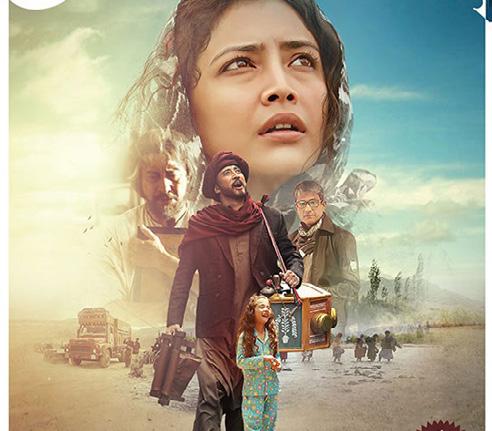
RISHI KAPOOR: REMEMBERING GRANDAD
Having just seen 102 Not Out, we are just beginning to think of Rishi Kapoor as a grandfather. But the actor has been remembering his own grandad this past fortnight.
Yes, it was legendary actor Prithviraj Kapoor’s 47th death anniversary on 29 May.
Rishi Kapoor tweeted on the occasion, “Prithvinath Kapoor. Born: November 3, 1906, Samundri, Lyallpur District, Punjab, British India. Died: May 29, 1971, Mumbai, India as Prithviraj Kapoor (changed name) Remembering you!”
Everything seems to be a joke in the eagerly awaited trailer of Rajkumar Hirani’s Sanju, based on the life of troubled actor Sanjay Dutt. A cruel joke told in the form of a psychedelic fable replete with visuals of Sanju baba aka Ranbir Kapoor, high on drugs, so high that he can’t tell the difference between a laugh and a cry, or a mangalsutra and a toilet seat.

In a sequence meant to be deafeningly shrill in its hysterical repudiation of a traumatic marriage, Sonam Kapoor Ahuja shrieks for her missing mangalsutra, and her high-as-a-kite husband drapes her neck with a toilet seat.
Toilets occur twice in the longish trailer. Next we see Sanju in a dingy prison cell panicking as the inbuilt toilet vomits yellow liquid excreta in nauseating bubbles.
Realism during the times of surrealism.
The atmosphere is light, uffy, woozy and jokey even in the scenes of horri c torture where Ranbir’s Sanju cracks up after a resounding slap from a policeman interrogating him for his alleged terror activity. It is again an unintentionally funny moment because the real Sanjay Dutt must have cracked up so many times under duress without looking like he has just been caught eating an extra gulab jamun for dessert.
Sanjay’s saga is a chronicle of self-abuse and voluntary destruction. Neither of these aspects is highlighted or even mentioned in the trailer. Barring the small glimpse of Manisha Koirala as Sanjay’s legendary mother Nargis, every actor seems to be in this for the fun of it. Vicky Kaushal, so majestically restrained in Raazi, is specially annoying as Sanju’s sidekick smirking about “say-ex”.
And Paresh Rawal as Sunil Dutt behaves as if his son is an angel targeted by all the devils in the world. This is so wrong. I remember how troubled Sunil was by his son’s antics. Speaking to me, he had called his son a “bigda beta (a brat)” spoilt by his mother. The trailer makes it seems the father blames the world for his son’s troubles.
Everything in the trailer seems to be done for effect. Anushka Sharma (with a specially-cropped haircut to look the part) asks Sanjay how many women he has slept with besides his girlfriends. (Which journalist asks such questions in Mumbai?)
“Does that include prostitutes? 308... no make that 350 just to be on the safe side,” Ranbir’s Sanju deadpans.
The overweening cuteness of an incorrigible hedonist is unbearable to digest.
The only moment that actually had me laughing was when director Mahesh Manjrekar calls Sanjay Dutt, saying the shot is ready. Sanju pretends to be stuck in the traf c.
“But I’ve called you on the landline,” protests Manjrekar with a laugh. That’s it. Everyone - from mum Nargis to friend Manjrekar - laughed off Sanju baba’s wrongdoings.
Judging by the trailer, it seems we’re supposed to do the same. Subhash K. Jha
And in his typically brusque manner, added, “Wikipedia has got the year of death wrong.”
You tell them, Rishi.
Prithviraj began his acting career in the theatres of Lyallpur and Peshawar in the 1920s.
He later featured in lms like Cinema Girl, Sher-e-Arab, Prince Vijaykumar, Alam Ara, Vidyapati and Mughal-e-Azam

RAM GOPAL VARMA: VIOLENT OFFICER
Ram Gopal Varma’s actioner Of cer is yet to get the censor nod although the lm is just days away from release. Reason? The violent content.
Apparently, there are scenes of graphic violence in the lm which have the Central Board Of Film Certi cation (CBFC) ummoxed. Though Varma is more than willing to take an ‘Adult’ certi cate, the CBFC is yet in two minds about letting some of the violence go scot-free.
Varma doesn’t deny the violent content in Of cer
“It is a lm about the violent society we live in and one man’s struggle to bring a semblance of sanity in the lives of common citizens. The violence in Of cer is raw and real,” he said.
“You can’t show the reaction until you spotlight the action. The violence here is not gratuitous. It will make the audience uncomfortable, as any form of violence is supposed to,” he added.
SALMAN KHAN: THROWING FAVOURS AROUND
Salman Khan is well known for giving a break to star kids and aspiring actors or singers. But this time round he seems to have gone the extra mile.
Looking high and low for a female lead for his home production, he may have picked Warina Hussain (“Mujhe ladki mil gayi”, remember?) but there were others he liked in the short list.
One of these was Yogita Bihani. The magnanimous guy that Salman is, he recommended her for Ekta Kapoor’s upcoming show Dil Hi Toh Hai
The young actor is over the moon. “I may have missed out on Loveratri, but thanks to Salman Khan I’ve got a perfect launch,” she said recently. “I can
say that it’s not less than a movie. It has a great story.”
The show is yet to premiere on Sony Entertainment Television but it’s already the talk of the town.
So Kajol joins The Incredibles family. Actress Kajol has lent her voice to the character of Helen Parr, Elastigirl, for the Hindi version of Disney.Pixar’s Incredibles 2
“Incredibles 2 brings to us a heartwarming tale of a family that is like us,” Kajol said in a statement recently. “But yet they are different. There were so many moments in the story that I could relate with and I knew I had to join the fun.”
The sequel picks up right after the 2004 original, with Craig T. Nelson returning as the voice of Bob Parr, Holly Hunter as Elastigirl and Samuel L. Jackson as Frozone. Brad Bird, who voices fashion designer Edna Mode, is back to direct the project.
The sequel again deals with the Parr family attempting balance having a normal life with their superhero powers.
“I am really excited to be a part of the family of Supers and contribute to this fun feature in my own special way,” added Kajol.
With Kajol as Helen aka Elastigirl, Incredibles 2 will de nitely appeal to newer audiences and families at large.
The lm is slated to release in India on 22 June in English, Hindi, Tamil and Telugu.
It’s an unforgettable number, Yeh duniya agar mil bhi jaye.
Late singer Mohammed Ra ’s track in late actor Guru Dutt’s acclaimed lm Pyaasa is being recreated for the Kunal Kapoor-starrer Noblemen
The lm is centred around bullying in schools and is directed by Vandana Kataria. It is the story of a 15-year-old boy, struggling with his adolescent years, terrorised by a gang of bullies in a posh boarding school, setting forth a chain of events that lead to loss of life and innocence.
“It’s an iconic song and seemed to t our lm and the present times very aptly,” Kataria said. “It’s darker in its theme, has fast instrumentation, the lyrics have been changed to suit the lm.”
She added, “Guru Dutt’s classic song has a timeless quality to it. It is emblematic of the sheer worthlessness of times we inhabit - one that resonates with the situation the protagonists face in the lm.”
We’ll just have to wait and see if this classic gives a new youth-based lm a relevant twist.
Would you agree with us when we call Akshay Kumar, an action star turned feminist?

Bollywood’s own ‘Pad Man’ Akshay Kumar made the headlines yet again when he claimed recently that it is just as important to educate men as women about menstrual hygiene. He was speaking at a forum on Menstrual Hygiene Awareness day.
Speaking about an issue that he has become so well-known for, he said, “The very idea that men can talk about having a set of sanitary napkins along with Rakhi is revolutionary. I got to know that 70 percent of rural women suffer from infection as they use cloth and recycle it. They would wash it but would not hang it out in sun to dry because it’s a matter of shame. So they would dry under the mattresses of the cot. This would lead to inevitable diseases. Even in the 21st century, Indian women didn’t have a patch of sunlight for themselves. That hit me so hard.”
He also explained the thought that provoked him to make the lm Pad Man “I read somewhere, ‘Never mess with someone who bleeds ve days a month
but does not die - that’s the power of a woman’,” he said.
Sounds like something his beautiful –and witty – wife Twinkle would say!
He concluded that commercial lms, more than documentary lms, will have an impact on changing society in a positive way.
Mumbai’s lm industry is not exactly known for its realism. And its biggest star, Amitabh Bachchan, is no apologist for this; in fact, he has always celebrated this fact. In a recent interview he reiterated that he has no intention to stay relevant, and doesn’t pick his projects with that mindset.
“I have no intention of being relevant, and I certainly do not work towards it,” Amitabh said. “If there is something that fascinates me I give it a shot. At times it works, most of the time it does not.”
His latest punt, 102 Not Out, certainly seems to have worked.
Actress Sunny Leone says that she did her own horse riding and other stunts for the rst look shoot for her upcoming lm Veeramadevi.

A period drama, the lm will mark the debut of the Indo-Canadian actress in the Tamil lm industry.
The lm’s makers are reportedly planning to release the lm in four other languages - Telugu, Kannada,
Malayalam, and Hindi.
Sunny, whose real name is Karenjit Kaur Vohra, was last seen on the big screen in 2017 in the lm Tera Intezaar with Arbaaz Khan.


Upcoming Salman Khan-starrer Race 3 will be one for the petrol-heads, if reports are to be believe. It has car chase sequences that were shot on the Formula One circuit.
The makers of the lm, helmed by Remo D’souza, have picked cars like Ferrari, Lamborghini and Maserati for the action entertainer.
Boasting of high octane sequences, the forthcoming lm offers scenes of cars being blown up into pieces.
“There will be more than 15 ‘supercars’ that will be a treat for all car lovers,” a spokesperson for the lm said recently.
Looks like Race 3 is said to take the Race franchise to an all-time high with action a notch higher and suspense that will leave the audience on the edge of their seats.
Starring an ensemble cast of Salman, Jacqueline Fernandez, Anil Kapoor, Bobby Deol, Saqib Saleem and Daisy Shah, the lm has been produced by Salman Khan Films and Ramesh Taurani under the banner of Tips Films. It will hit the screens on Eid this year.
Match the stars to the tweets below Shabana Azmi, Priyanka Chopra, Shah Rukh Khan, Sonam Kapoor Ahuja
My sunshine turns 5 years today but he thinks he is 9! Please don’t tell him otherwise if u meet him.
Aliaa Meghna Congratulations on the success of Raazi. Woman centric woman directed lm to win both critical acclaim and do phenomenally at the box of ce ... you pave the way for many such in future
I’m in Cox’s Bazaar, Bangladesh today for a eld visit UNICEF, visiting one of the largest refugee camps in the world
More than anything, I’m incredibly proud to be sharing June 1st with the release of my brother’s lm. As he rightly said, it’s going to be a day of celebration in our family.
What’s the chit-chat here between SONAM KAPOOR & KAREENA KAPOOR


Send your response to: media@indianlink.com.au TO WIN A MOVIE TICKET!!
What’s the chit-chat here between VARUN DHAWAN and ANUSHKA SHARMA
Varun: “Anushka ek dhaasu performance ho jaaye, meri last teen releases pit chuki hain!”

Anushka: “Chill yaar, meri bhi. I care more about scores than reviews now.”
By Nikita ThakkarCongrats, Nikita! You win a movie ticket!
DEAR AUNTYJI
I live next to a nice, easy going Australian lady who is a single mum (widowed) and works from home as a hairdresser. We have lived next to her for ve years and she has two kids, 5 and 8 who have grown before my eyes. Now Auntyji, I often look after Josh and Ivy and they are the most wonderful kids. Sometimes they come over and even watch Bollywood lms with me, and they eat roti and Santi with their hands and even try to speak Hindi! I don’t mind watching them because they love playing with my Nikhil and it’s good having them over. But Auntyji, whenever I ask Melissa for a haircut, she always charges me full price: $50. I think because I help look after her kids, she should give me a discount on the haircut. I only ask every three months for a haircut, so it’s not all the time. But she always charges me. What are your thoughts on this?
AUNTYJI SAYS
Arre you kanjoos, you paapin, you khudgarz aurat. Such a berahem I have not come across before. Have you absolutely no sharam that you think you should take paisa from a single Ma?
A vidhwa? With do bechare bachche?
Kahan hai tumhari charity, tumhara sense of societal obligations? And sirf $50 ke liye? You probably spend more on shampoo and conditioner every three months and you don’t even realise it. Here is the thing. You are looking after her kids and that’s a good thing to do. Consider this your tax for living in this country, next to a nice neighbour who leaves you alone and who trusts you with her kids. And think about the bachche log. They are growing up with you - you are helping create some wonderful memories of their bachpan. How could you possibly put a daam on this? So open your kala dil, and let in some pyar aur mohabbat. That $50 is not much tumhare liye, but it might mean a lot for tumhari padosan. Finally, you are not a pharoah - you can’t take your money with you. Better to spend it now. Write to me again and let me know if you have opened your eyes as well as your heart.
Kanjoosi kisi ke liye acchi nahi hoti
DEAR AUNTYJI
I have a niece who is a small star in Bollywood and I know she is going places. She is a great dancer and very attractive. She even appears on TV
every now and again. Now, she is getting married to an industrialist and she has made claims that she does not want a big wedding. No big wedding! Can you imagine itni ghatiya baat??
When I heard about this, I was disappointed and irritated. I was so upset I even called my sister-in-law to discuss this with her and she agrees. She is an upcoming Bollywood star na, and look at her wanting a chhoti si shaadi. I mean, she has itna paisa, why can’t she spend it on her shaadi? And she is marrying a crorepati! I mean, look at Sonam Kapoor, Aunty. Look how grand her wedding was. She even snuck in guy who created a special Instagram account called #sonamkishaadi. A wedding is the most important day of a young woman’s life and it is a celebration, so why not celebrate it in style and by feeding as many people as possible. It should be done in dhoom dhaam style, with naachna, gana, vagera vagera. Do you think my niece should reconsider her positon seeing that she is becoming a Bollywood star? Aap ka kya khayal hai?
Hey Ram! What’s up with all these paisa-obsessed budtehzeebs writing to me today? Have these anpadh log no maan and maryada to understand that

paisa is not really discussed in polite, cultured society? Well, let me tell you right now, my kaali kalooti, my little nagin, my karela, that your opinions are as backward as you. Who says that one needs to have a big wedding just because you have money? People with money and class tend to be understated in their expenditure of this, and in showing the duniya and their daulat, just like your darling Sonam Kapoor. Unclassy ganwars like yourself like to show off with big weddings, and get divorced 12 months later. I mean seriously, do you really care what any upcoming Bollywood star does? Aren’t you too busy living your own life to even spend a moment caring about what your almost famous niece, Sonam, Kareena, Katrina, Jhanvi, Salman and Taimur are doing? Really? What your nameless bhanji does with her money is her own business. Listen carefully, it’s her business. Big wedding, small wedding, no shaadi, no baraati, it’s none of your business. You just continue living your life and minding your own affairs. Stop worrying about dusre log. By the way, how big was your wedding, and how far off is your divorce? How much is your mortgage? How much do you earn every year? If you don’t want that scrutiny in your life, then you should leave your niece alone. She certainly is not asking for your rai, after all.
Words Neha Malude Illustration Aparna Ananthuni
Doesn’t the girl know how to make tea?” asked the boy’s mother, taking the cup from Meera’s mum. Meera smiled sweetly. “No, but I make a kick-ass Long Island Iced Tea, aunty. Would you like that?”

























